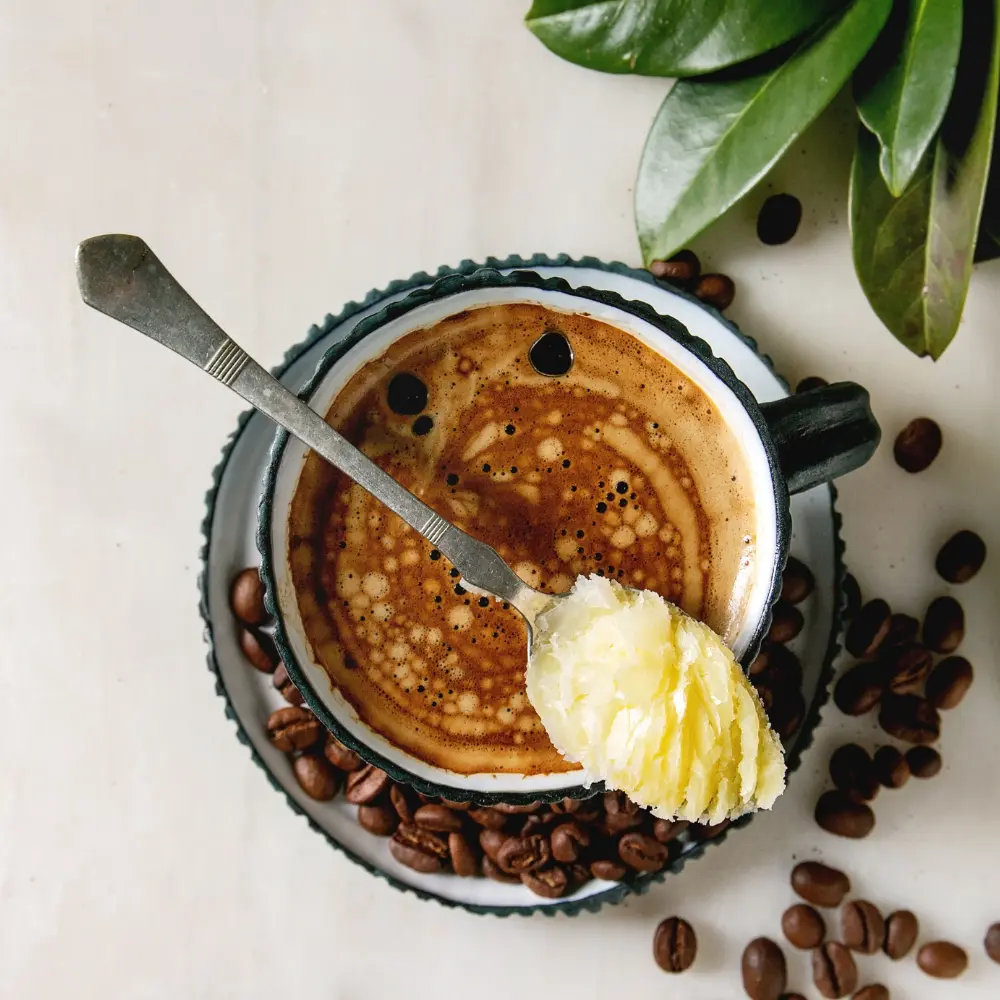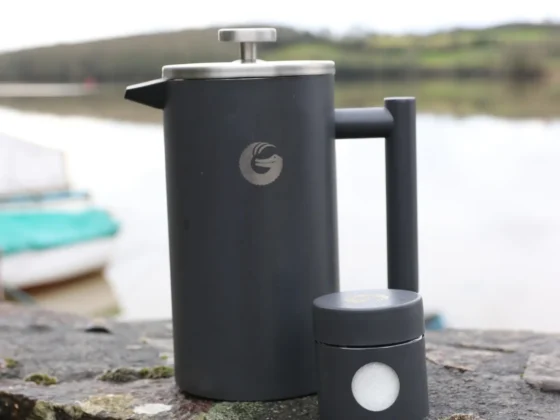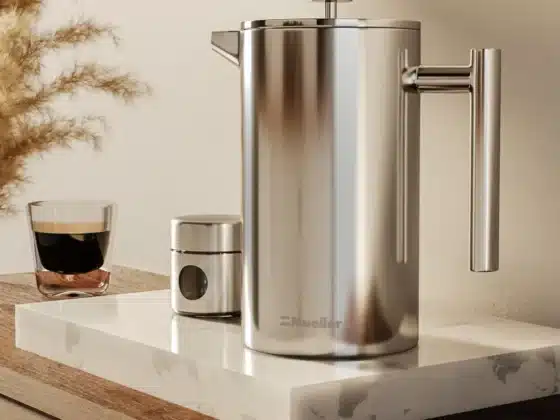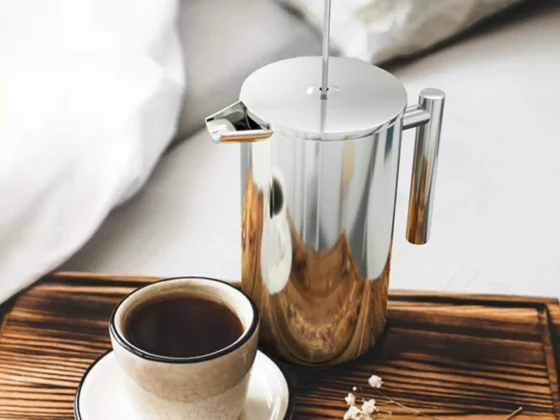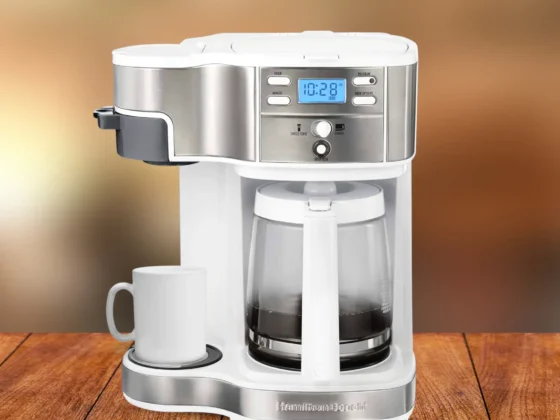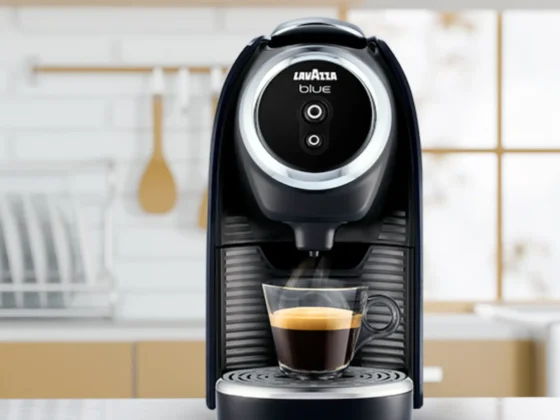Allow me to introduce you to the wondrous universe of pour over coffee, a place where the delicate art of brewing intersects with the rigorous science of extraction, culminating in a harmoniously balanced cup that enlivens your palate and stimulates your senses. In this ultimate compendium, we shall embark on an odyssey through the fascinating realm of this brewing method, illuminating its rich past, imparting the techniques necessary to achieve mastery, and delving into the equipment that makes it the beverage of choice for coffee aficionados worldwide.
Whether you are a seasoned barista, a coffee enthusiast eager to up your brewing game, or simply someone who enjoys a superb cup of joe, this comprehensive guide has something to offer all. We shall delve into the intricacies of selecting the ideal coffee beans, demystify the elusive concepts of grind size and water temperature, and impart delectable recipes that will leave you craving more.
So, without further ado, I implore you to procure your most cherished drinking vessel and accompany me on this thrilling expedition as we uncover the clandestine workings of brewing the perfect pour-over coffee in the comfort of your own home. Prepare to metamorphose your quotidian caffeine ritual into an exquisite encounter that not only tantalizes your taste buds but also nourishes your soul.
Pour Over Coffee: Key Takeaway
- Pour over brewing is a popular coffee-making method that allows for full control over the brewing process, resulting in a clean, bright, and nuanced cup of coffee that highlights the unique flavors and aromatics of your chosen beans.
- Essential pour-over equipment includes a high-quality burr grinder for consistent grind size, a pour over coffee maker, a kettle with temperature control and a gooseneck spout for precise pouring, a scale for accurate coffee-to-water ratio measurements, and appropriate filters.
- Mastering the pour-over technique involves finding the optimal coffee-to-water ratio, ensuring the right water temperature and flow control, and properly executing the bloom phase to unlock your coffee’s full flavor potential.
- Customizing your coffee experience involves experimenting with different coffee beans, grind sizes, and brewing variables to find the perfect balance for your taste preferences. Additional enhancements, such as flavored syrups, can further personalize your coffee experience.
- This coffee brewing method can serve as the base for a variety of delicious coffee recipes, from classic brews and iced coffee to specialty drinks like espresso martinis and coffee tonics.
The Art of Pour Over Coffee
Pour-over coffee is more than just a brewing method; it’s an art form that has captivated coffee lovers for generations. It combines precision, skill, and creativity, allowing you to craft a cup of coffee that is uniquely yours. Let’s dive into the fascinating world of this brewing method and discover the history, reasons, and science behind this popular brewing technique.
The Origins and History of Pour Over Brewing
The roots of this brewing method can be traced back to early 19th century Germany, where Melitta Bentz, a housewife, revolutionized the coffee world by inventing the first paper coffee filter. Tired of dealing with bitter and gritty coffee, Melitta crafted a simple yet effective solution by poking holes in a brass pot and lining it with blotting paper from her son’s school notebook. This innovative contraption laid the foundation for modern pour-over brewing.
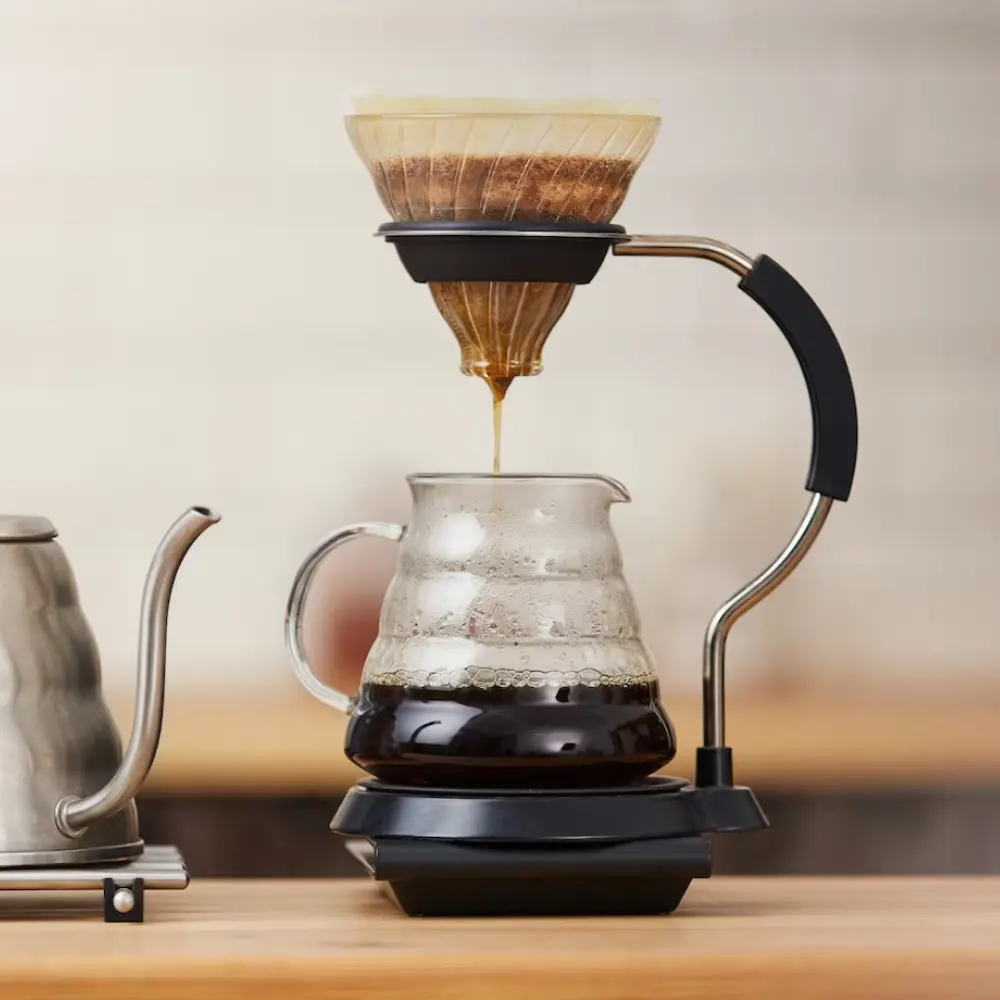
The pour-over method gained popularity in Japan, where it was further refined and developed into the elegant and precise process we know today. The Hario V60, a cone-shaped dripper with spiral ridges and a large hole at the bottom, was later introduced and has become an iconic symbol of pour-over coffee culture.
Why Pour Over Coffee is Worth the Effort
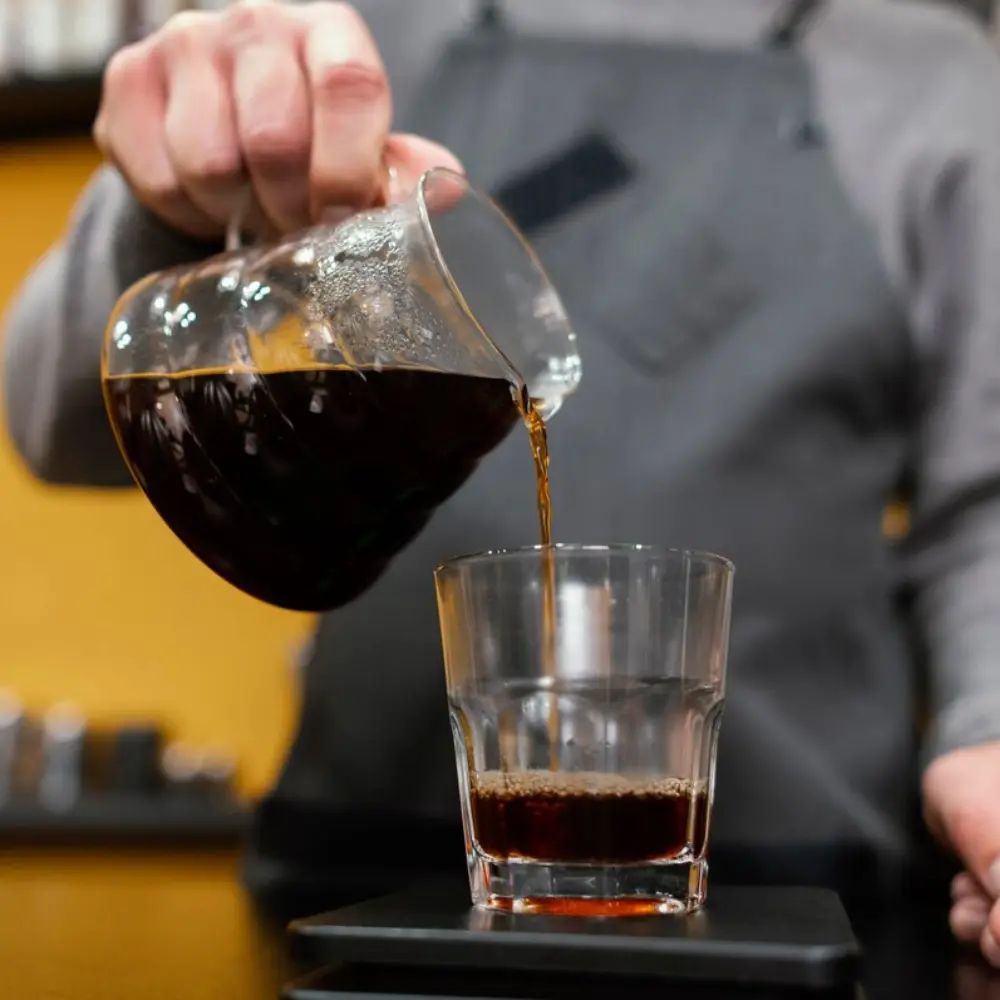
This coffee brewing technique has gained a loyal following among coffee enthusiasts and for good reason. This manual brewing method offers several advantages over other methods:
- Control: This brewing technique gives you complete control over every aspect of the brewing process, from water temperature and flow rate to brew time and coffee-to-water ratio. This allows you to fine-tune your coffee to suit your personal preferences.
- Clarity of flavor: The paper filter used in pour-over brewing effectively captures coffee oils and fine grounds, resulting in a clean and crisp cup that showcases the unique characteristics of your coffee beans.
- Ritual: The slow and deliberate process of pour-over brewing invites mindfulness and creates a moment of calm amidst the hustle and bustle of daily life. It’s a meditative experience that encourages you to savor the journey, not just the destination.
The Science Behind the Perfect Pour Over Brew
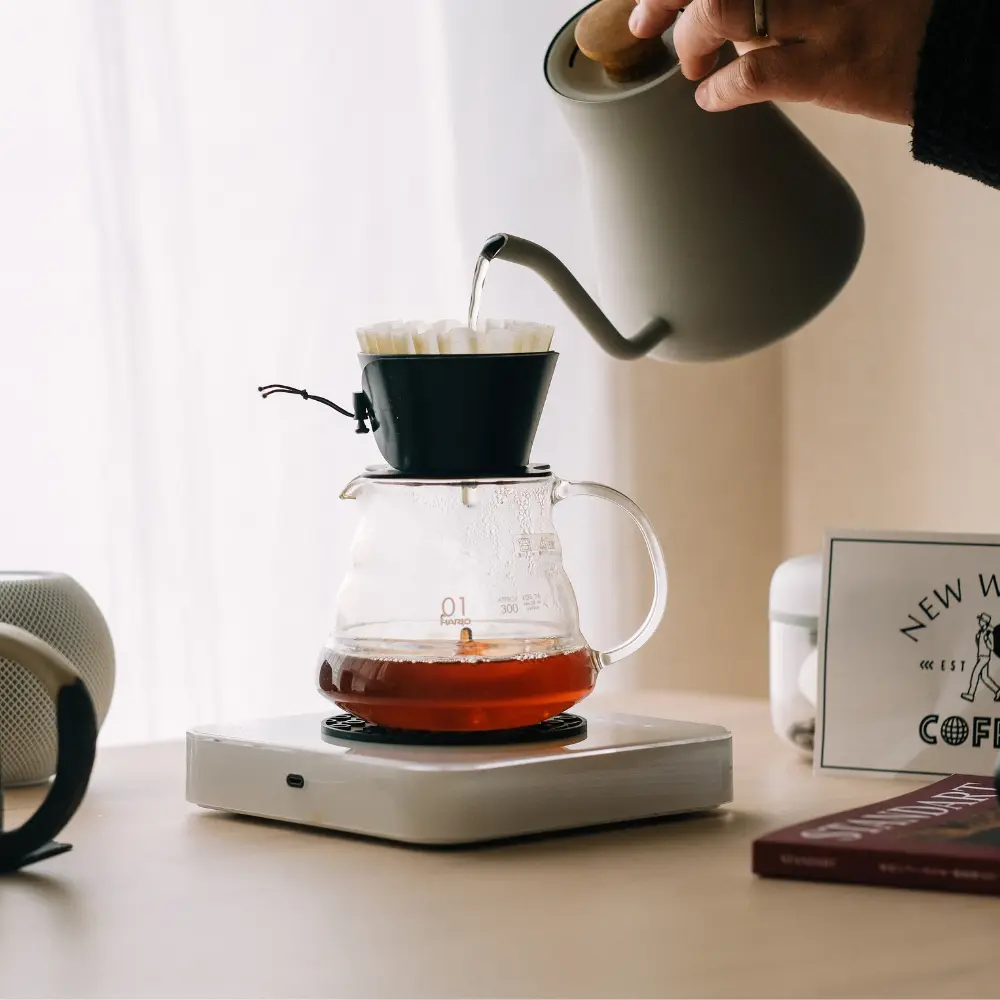
Understanding the science behind pour over brewing can help you unlock the full potential of your coffee beans. Here are three key factors that play a crucial role in achieving the perfect cup:
- Extraction: The process of dissolving coffee compounds from the grounds into the water is known as extraction. Achieving the right balance between under-extraction (sour, weak flavors) and over-extraction (bitter, harsh flavors) is essential for a well-rounded and flavorful brew. (1)
- Agitation: The act of pouring water over the coffee grounds creates turbulence, which increases the rate of extraction. Using a consistent, circular pouring motion can help ensure even extraction and prevent channeling, where water bypasses the coffee grounds and leads to an uneven brew.
- Temperature: Water temperature plays a vital role in extraction. Generally, a temperature range of 195°F to 205°F (90°C to 96°C) is recommended for optimal extraction, as it allows the water to dissolve the right balance of coffee solubles without scalding the grounds. (2)
By understanding and mastering the art and science of this brewing method, you can elevate your skills and indulge in a cup that is truly a masterpiece.
Essential Pour Over Equipment and Accessories
To achieve a perfect cup of joe, having the right equipment and accessories is crucial. From grinders and coffee makers to kettles and filters, each piece plays a vital role in creating a consistently delicious brew. Let’s explore the key components you need to elevate your coffee experience.
Choosing the Right Coffee Grinder for Consistent Grounds
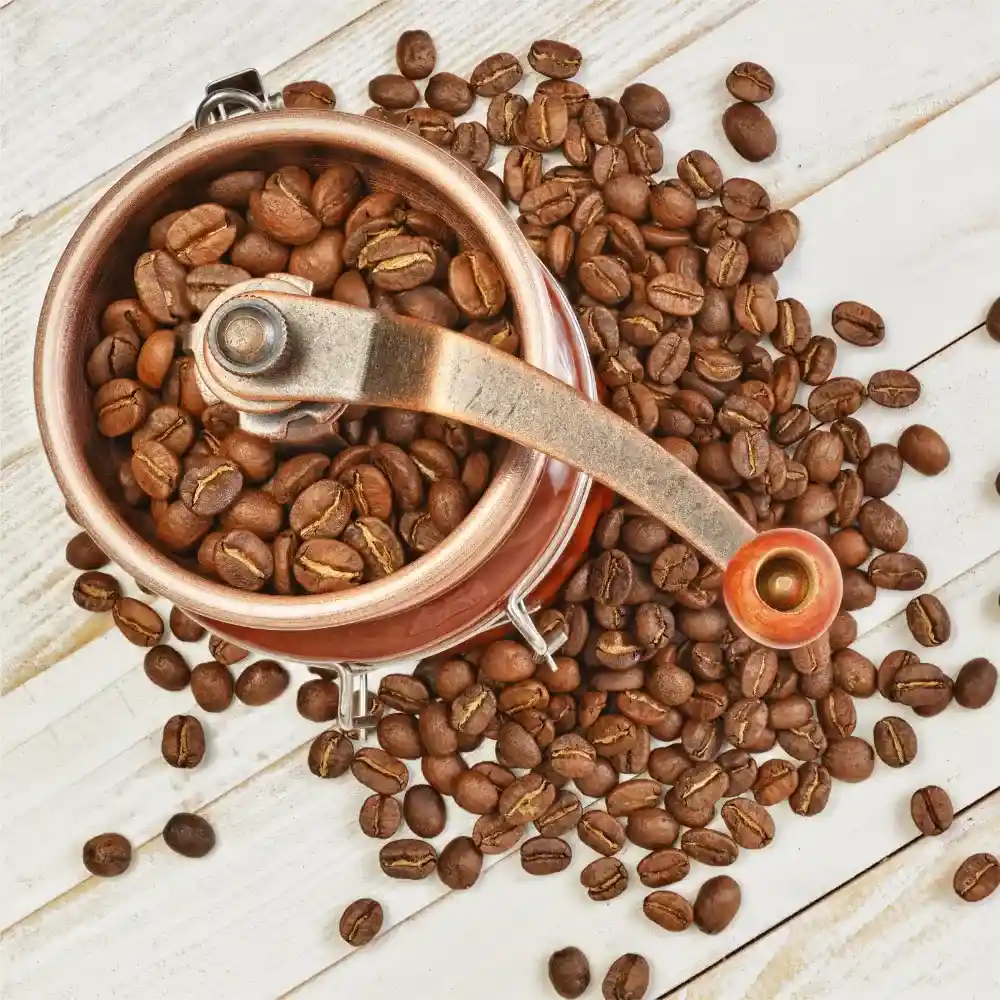
The coffee grinder is arguably the most important piece of equipment in your pour-over arsenal. A consistent grind size is essential for even extraction, which directly affects the taste and quality of your brew. There are two main types of grinders to consider:
- Blade grinders: These grinders use a spinning blade to chop coffee beans, resulting in an uneven grind. Although they are generally more affordable, blade grinders are not recommended for pour-over brewing due to their lack of consistency.
- Burr grinders: Burr coffee grinders crush coffee beans between two revolving abrasive surfaces, producing a uniform grind size. They are available in manual and electric versions and offer adjustable grind settings to suit your brewing preferences. For the best results in pour-over brewing, invest in a quality burr grinder.
Selecting a Pour Over Coffee Maker: Material, Design, and Size
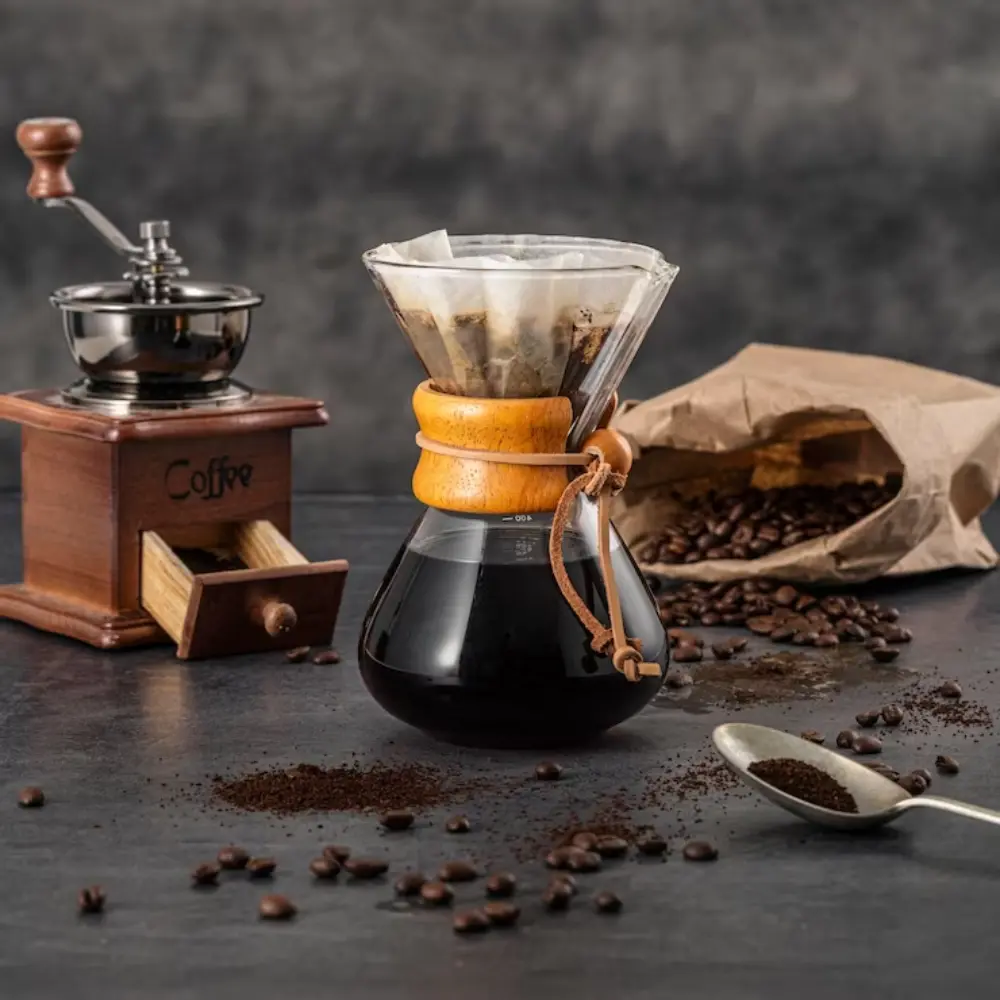
There is a wide variety of coffee makers available, each with its own unique design and characteristics. When selecting a coffee maker, consider the following factors:
- Material: Common materials include ceramic, glass, stainless steel, and plastic. Ceramic and glass retain heat well, while stainless steel is durable and easy to clean. Plastic is lightweight and affordable but may affect the taste of your coffee.
- Design: The shape and design of your coffee maker can impact extraction and overall brew quality. Popular designs include the Hario V60, Chemex, and Kalita Wave, each offering different features such as spiral ridges, flat bottoms, or unique filter shapes.
- Size: Coffee makers come in various sizes, from single-serve options to larger models that can brew multiple cups at once. Choose a size that best suits your brewing needs and the number of people you typically serve.
Kettles, Scales, and Filters: Enhancing Your Brewing Experience
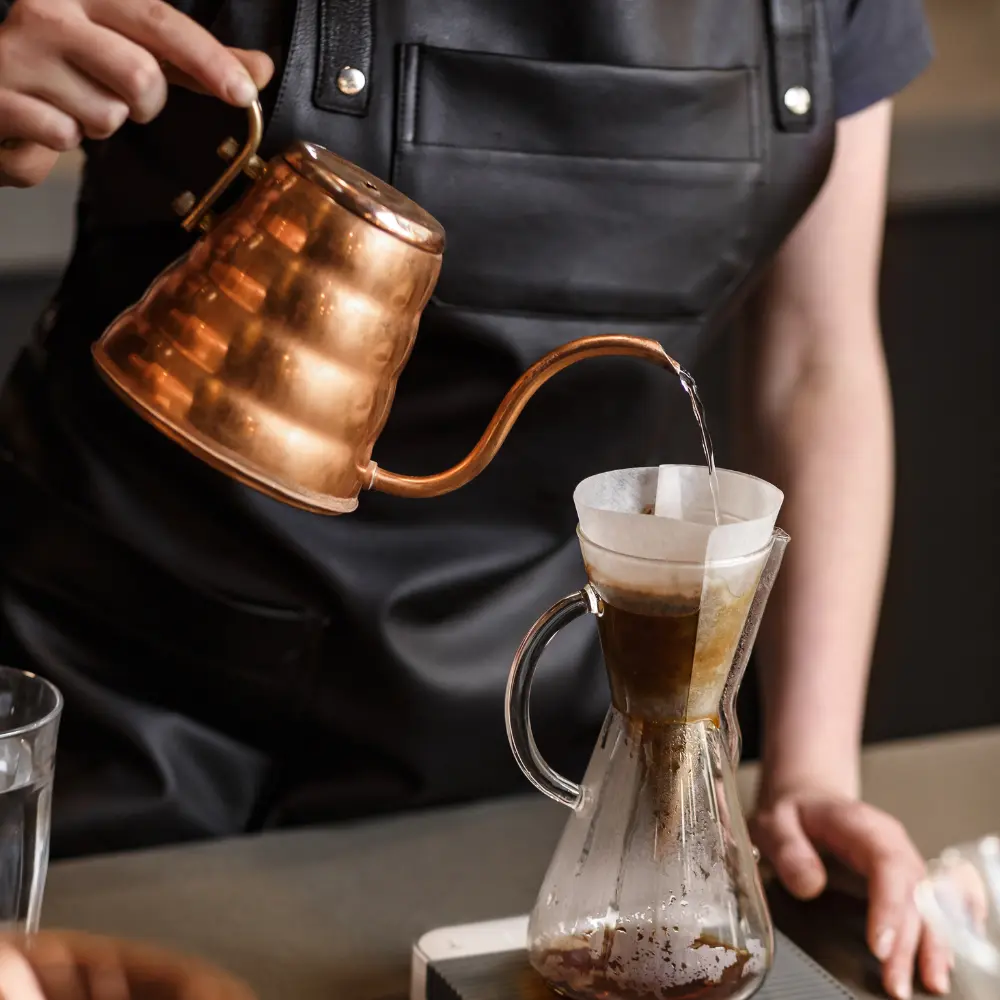
In addition to a grinder and coffee maker, several accessories can help you perfect your pour over brewing process:
- Kettle: A gooseneck kettle offers precise control over water flow and pouring speed, which is essential for even extraction. Look for a kettle with a built-in thermometer or invest in a separate thermometer to ensure accurate water temperature.
- Scale: A digital scale helps you measure the precise amount of coffee and water needed for your desired coffee-to-water ratio. Some scales even come with built-in timers to help you track your brew time.
- Filters: The type of filter you use can affect the taste and clarity of your coffee. Paper filters are the most common and offer a clean, crisp brew. Reusable metal filters are more environmentally friendly and allow more coffee oils to pass through, resulting in a richer, fuller-bodied taste.
By investing in quality pour over equipment and accessories, you can create a consistently exceptional coffee experience that rivals even the best specialty coffee shops.
Popular Types of Pour Over Coffee Makers
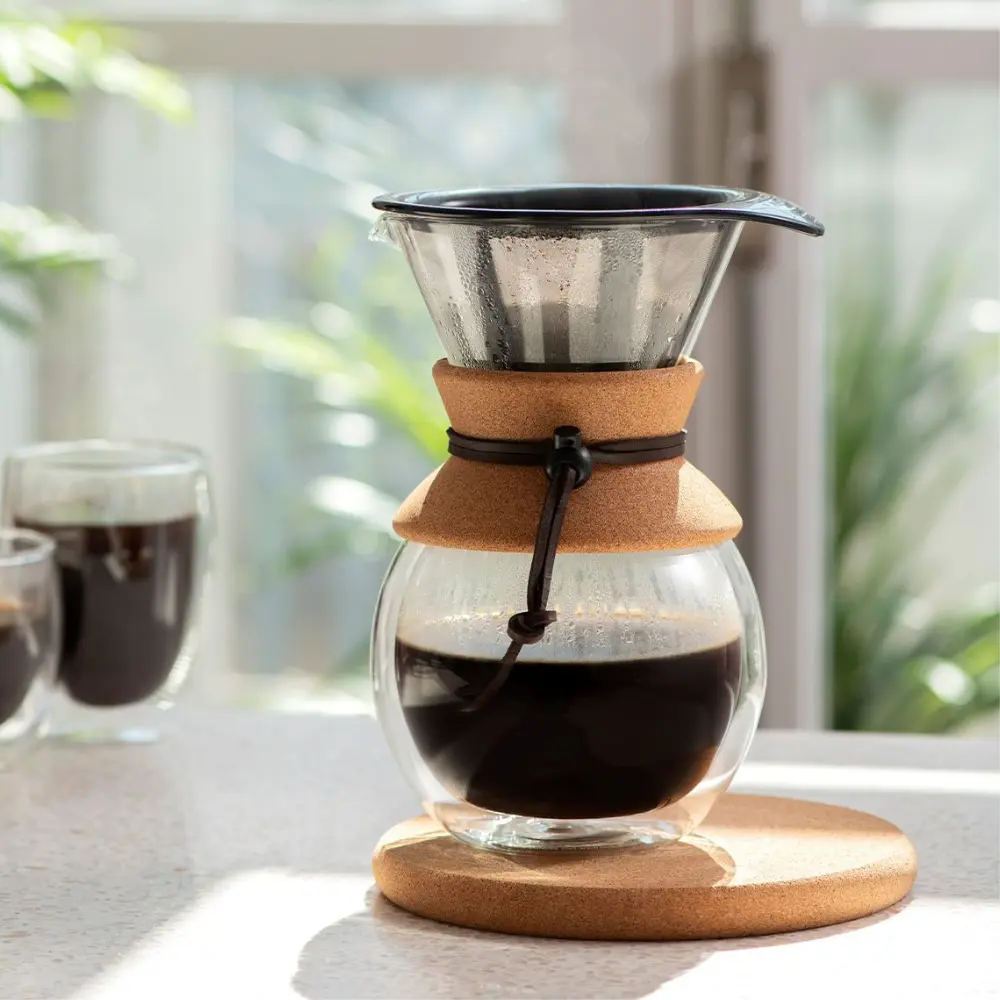
Selecting the appropriate coffee maker can have a profound impact on the brewing process and the ultimate taste of your coffee. A diverse range of pour over coffee makers are available, each with its distinct design and features. Let’s explore some of the most popular types to assist you in discovering the perfect fit for your brewing requirements:
Hario V60
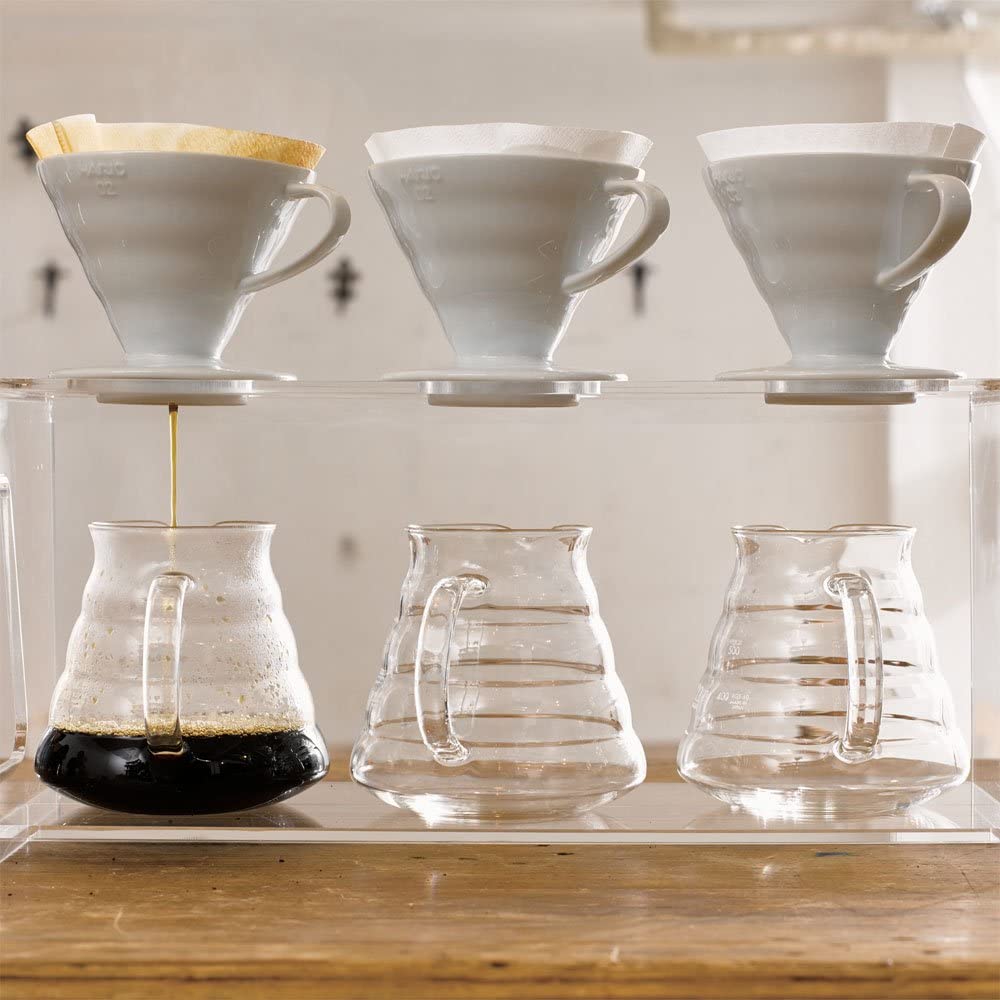
The Hario V60 is a cone-shaped coffee maker with a 60-degree angle that optimizes water flow through the coffee grounds. Its spiral ridges and a large hole at the bottom ensure uniform extraction, making it a favorite among coffee aficionados. The V60 is available in several materials, including ceramic, glass, plastic, and copper.
Chemex
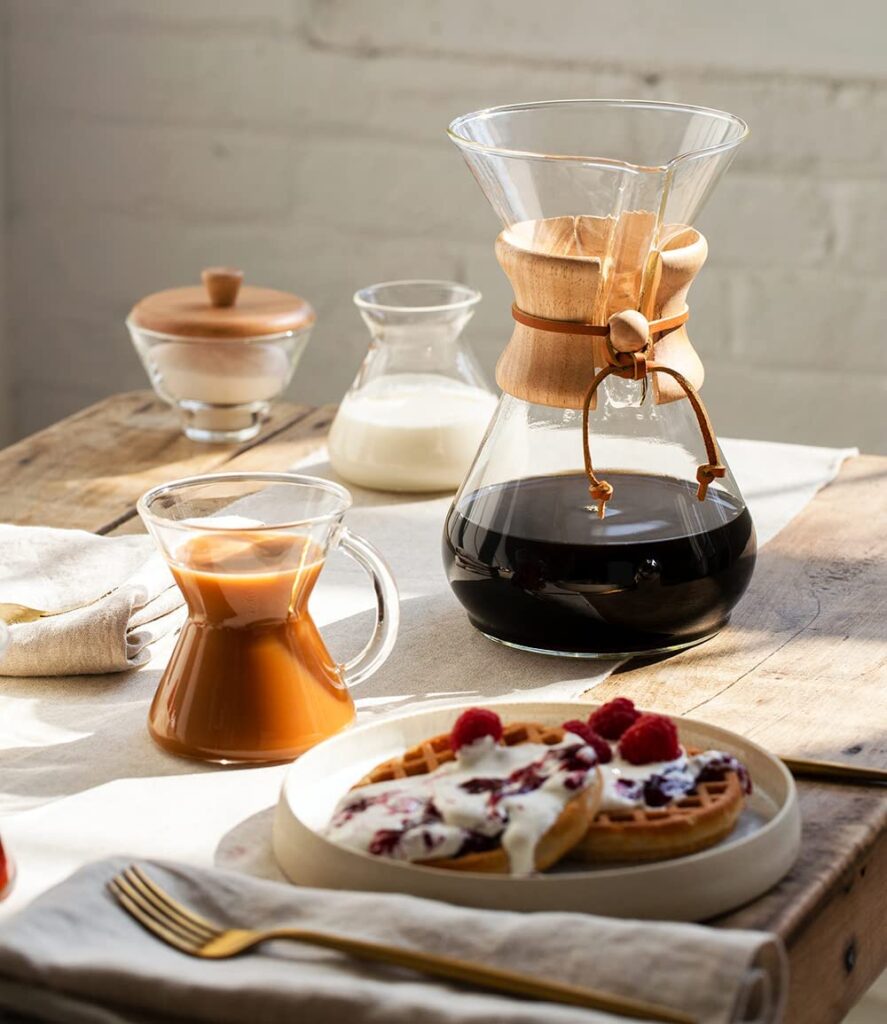
The Chemex is an elegant and iconic pour-over coffee maker that doubles as a carafe. Its hourglass shape and proprietary paper filters result in a clean, sediment-free brew with vivid and crisp flavors. The Chemex is made of borosilicate glass and is available in various sizes to accommodate different brewing volumes.
Kalita Wave
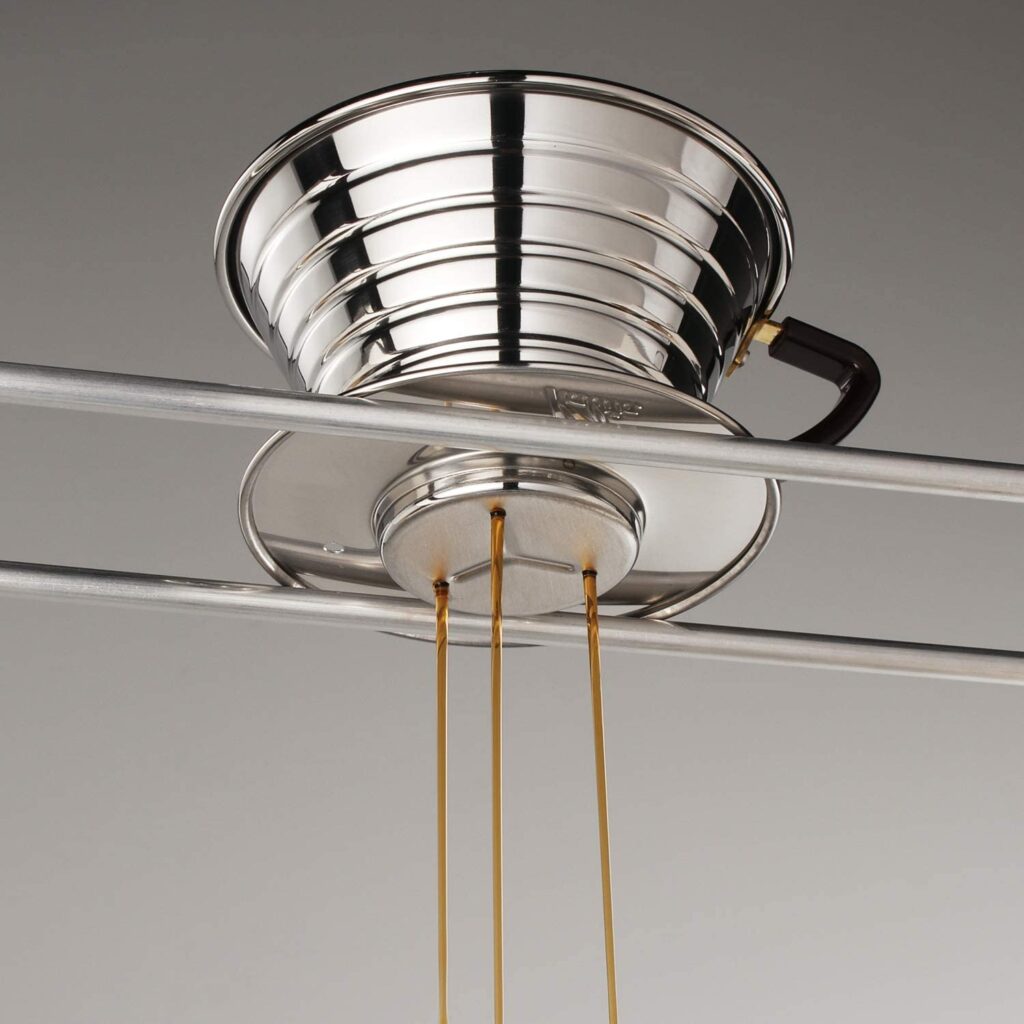
The Kalita Wave boasts a flat-bottom design with three small holes at the bottom, which aid in controlling the water flow and ensuring even extraction. Its undulating filters promote air circulation during brewing, further enhancing the extraction process. The Kalita Wave is available in stainless steel, glass, and ceramic versions.
Bee House
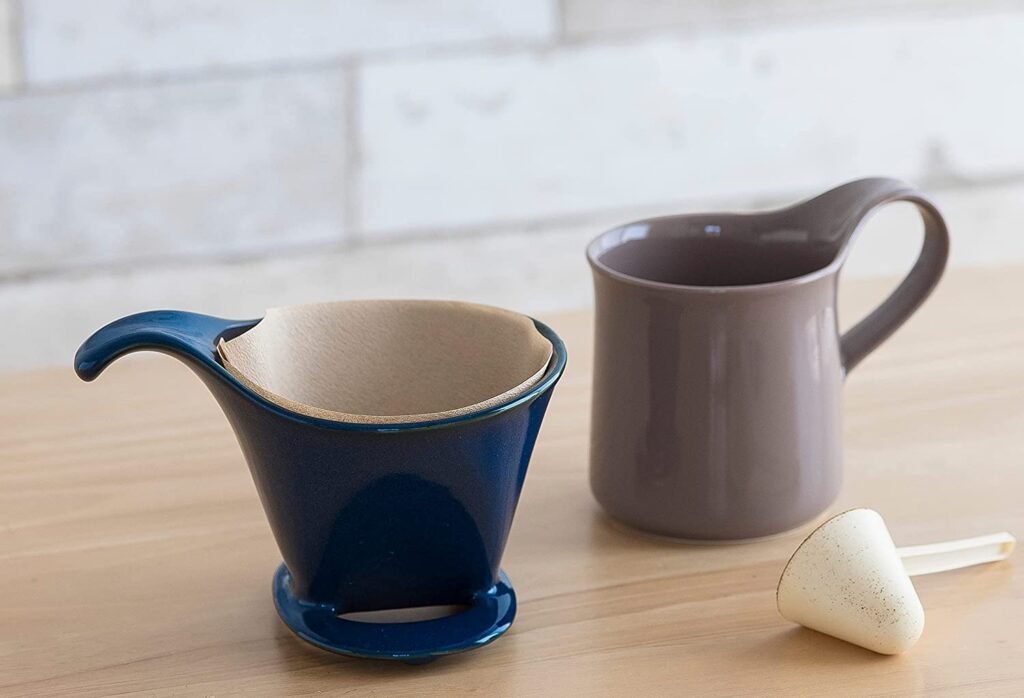
The Bee House coffee maker is another cone-shaped option, with a grooved interior and two small holes at the bottom. Its simplistic design makes it user-friendly and compatible with standard #2 or #4 Melitta filters. The Bee House is typically made of ceramic and comes in an array of colors.
Bodum Pour Over
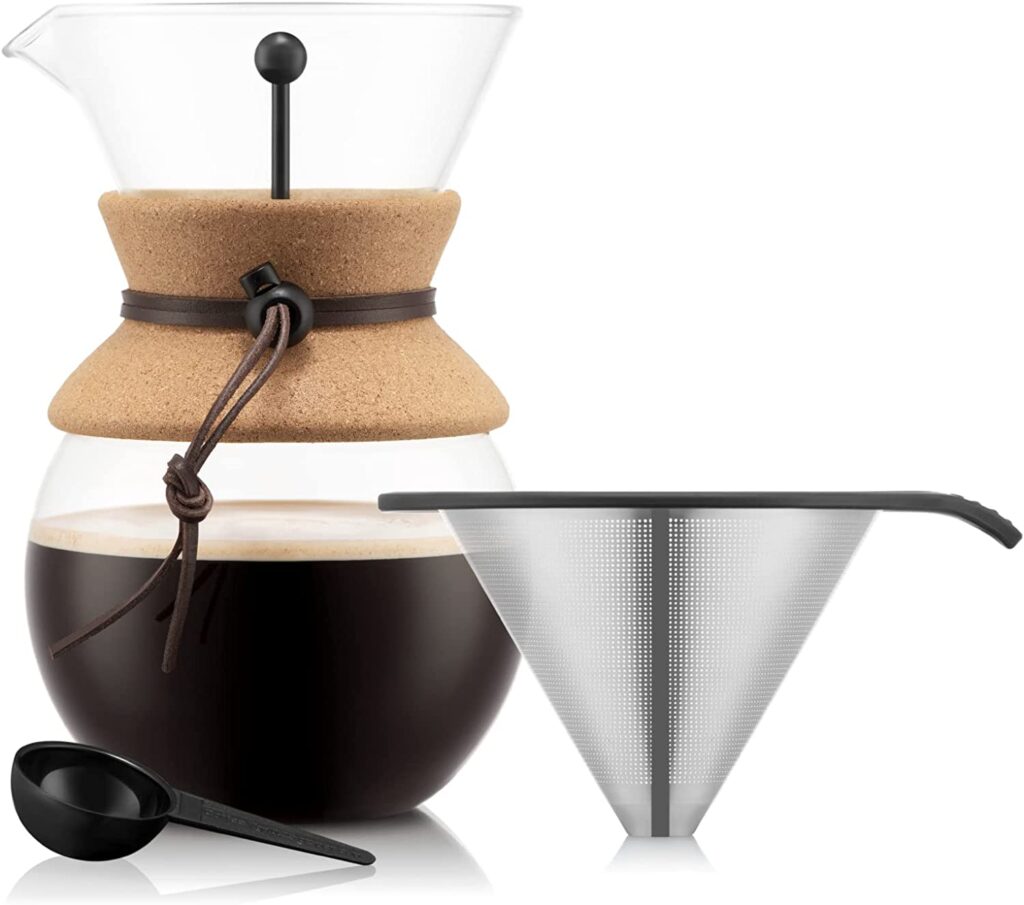
The Bodum pour-over coffee maker features a sleek glass carafe with a reusable stainless steel mesh filter. The mesh filter permits more coffee oils to pass through, producing a richer, fuller-bodied brew. The Bodum Pour Over is available in several sizes and offers an eco-friendly alternative to disposable paper filters.
Each coffee maker offers unique benefits and brewing characteristics. Experimenting with various models can help you determine the one that best suits your taste preferences and brewing style.
Mastering the Pour Over Technique
Crafting a superb cup of joe is a skill that demands time and practice to hone. To attain mastery, one must have a comprehensive understanding of the crucial aspects of the brewing process, such as coffee-to-water ratio, water temperature, flow control, and the bloom.
The Importance of Coffee-to-Water Ratio
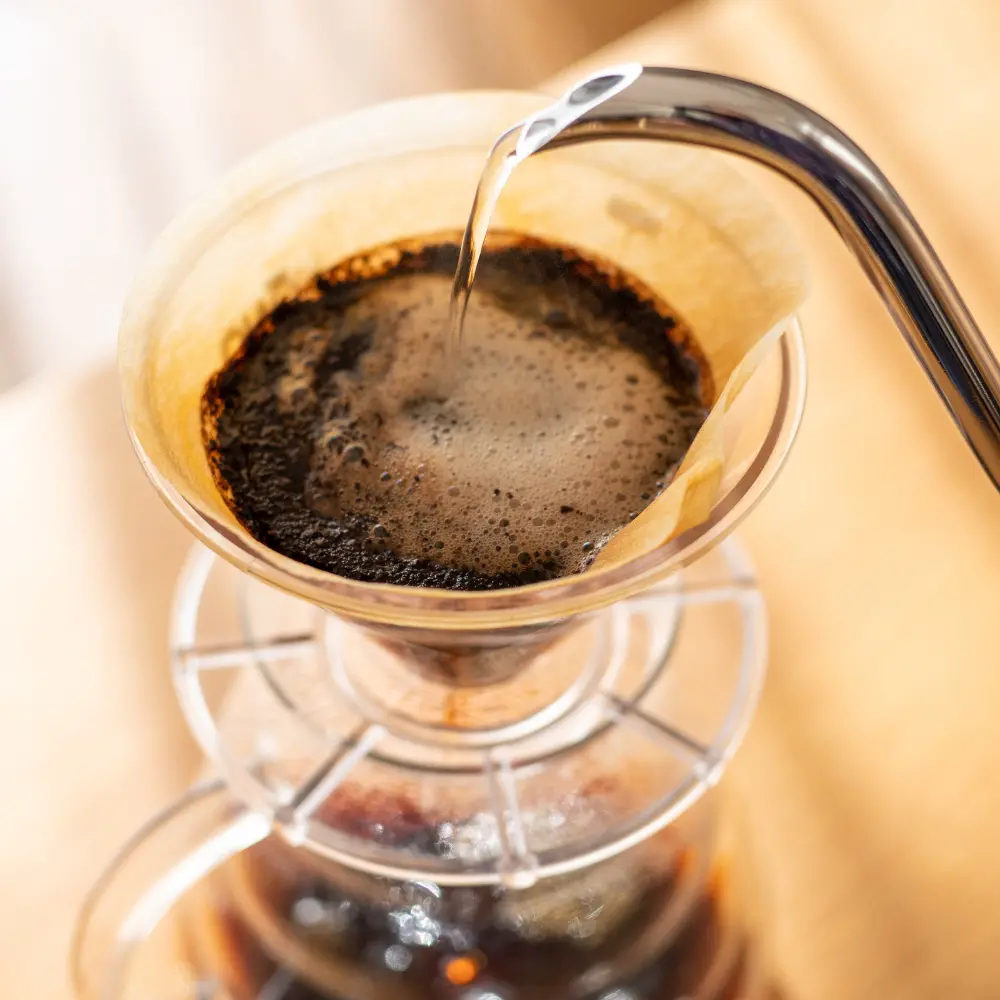
Among the many critical factors in pour over brewing, the coffee-to-water ratio reigns supreme. This ratio has a significant impact on the strength and flavor of your coffee and finding the right balance can make or break your brew. A widely accepted recommendation is to use a 1:15 to 1:17 coffee-to-water ratio, which entails using 1 gram of coffee for every 15 to 17 grams of water. However, this ratio can be altered according to individual taste preferences, with a lower ratio resulting in a stronger brew and a higher ratio producing a milder cup.
The precise measurement of coffee and water is paramount to achieving consistency in each brew. A digital scale can come in handy in this regard, ensuring that each cup you prepare is just as impeccable as the last. Experimenting with different ratios can assist in discovering the perfect balance that best suits your palate.
The Perfect Pour: Water Temperature and Flow Control
Water temperature and flow control are crucial aspects of pour over brewing that can significantly impact the taste of your coffee. As mentioned earlier, when it comes to water temperature, aim for a range between 195°F to 205°F (90°C to 96°C). This temperature range allows for optimal extraction without scalding the coffee grounds. A gooseneck kettle with a built-in thermometer can help you achieve the perfect water temperature every time.
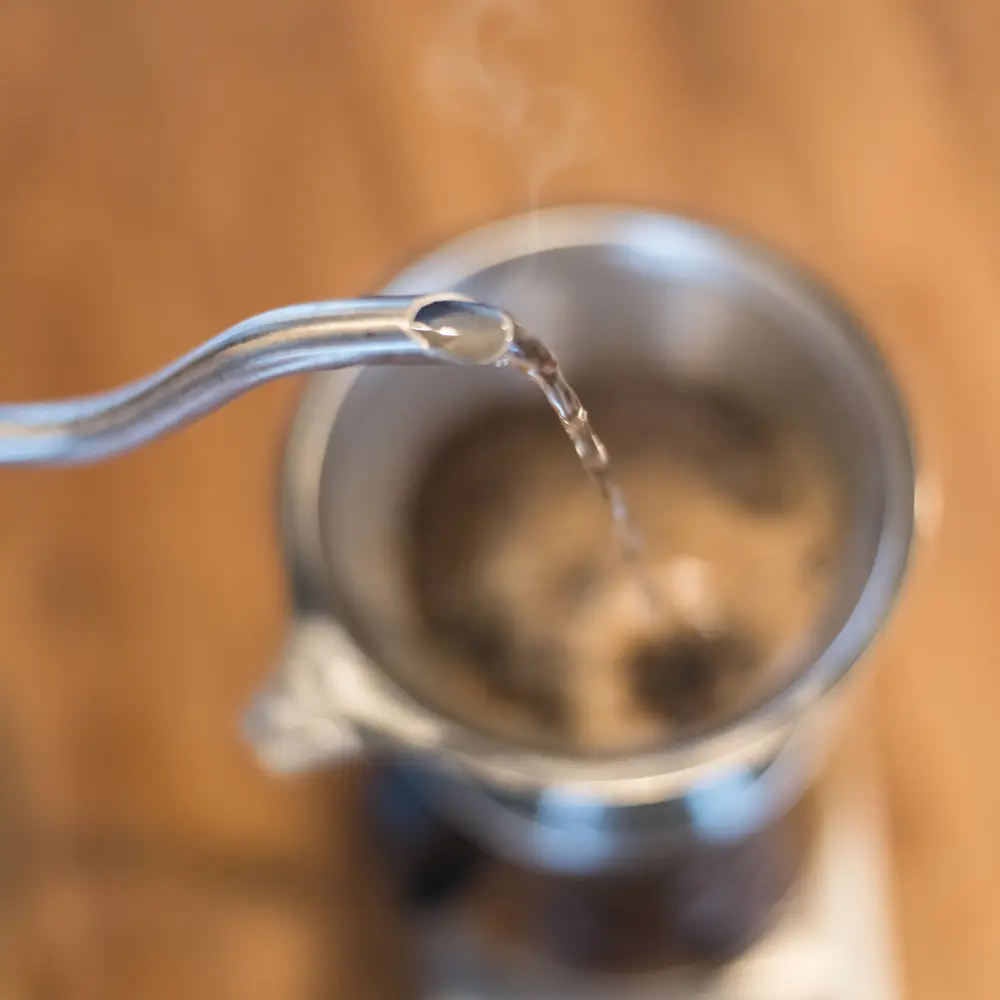
Flow control is essential for even extraction and preventing channeling, where water bypasses the coffee grounds, leading to an uneven brew. Begin by pouring slowly in a circular motion, starting from the center and working your way outward. Maintain a steady and consistent pour, being careful not to overfill the coffee maker. A gooseneck kettle provides excellent control over water flow and pouring speed, making it a valuable asset in pour over brewing.
The Bloom: Unlocking Your Coffee’s Full Flavor Potential
The coffee bloom is a crucial step in the pour over process that is often overlooked. It involves pre-wetting the coffee grounds with a small amount of hot water, allowing trapped gases (mainly carbon dioxide) to escape before the main pour. This step helps to ensure a more even extraction and unlocks the full flavor potential of your coffee.
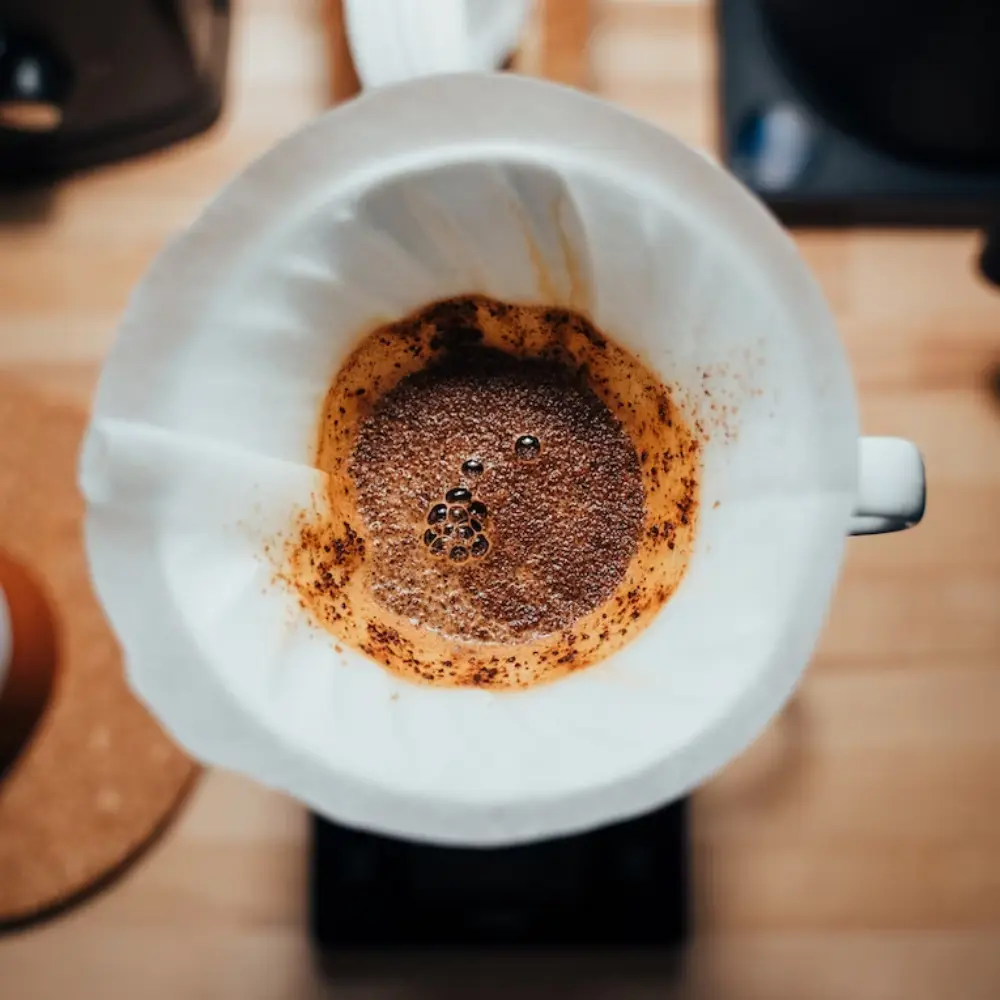
To perform the bloom, pour just enough water to saturate the coffee grounds (usually about twice the weight of the coffee) and let it sit for 30 to 45 seconds. You will notice the coffee grounds swelling and releasing gas in the form of bubbles. After the bloom is complete, continue with your main pour, following the recommended coffee-to-water ratio and pouring technique.
Did you know? It is highly recommended that you degas your freshly roasted coffee beans. Learn more about this with our article on degassing coffee.
By mastering the pour over technique, you’ll be well-equipped to create a consistently delicious cup of coffee that showcases the unique characteristics of your chosen beans. With practice and patience, you’ll soon discover the joy and satisfaction that comes from perfecting the art of pour over brewing.
Customizing Your Pour Over Coffee Experience
One of the greatest joys of pour over brewing is the ability to customize your coffee experience to suit your unique taste preferences. From selecting the ideal beans and adjusting the coffee grind size and brew time to incorporating flavored syrups and other enhancements, there are countless ways to make your cup of coffee truly your own. Let’s explore how you can personalize your coffee experience and find the perfect coffee ratio for your palate.
How to Choose the Best Coffee Beans for Pour Over Brewing
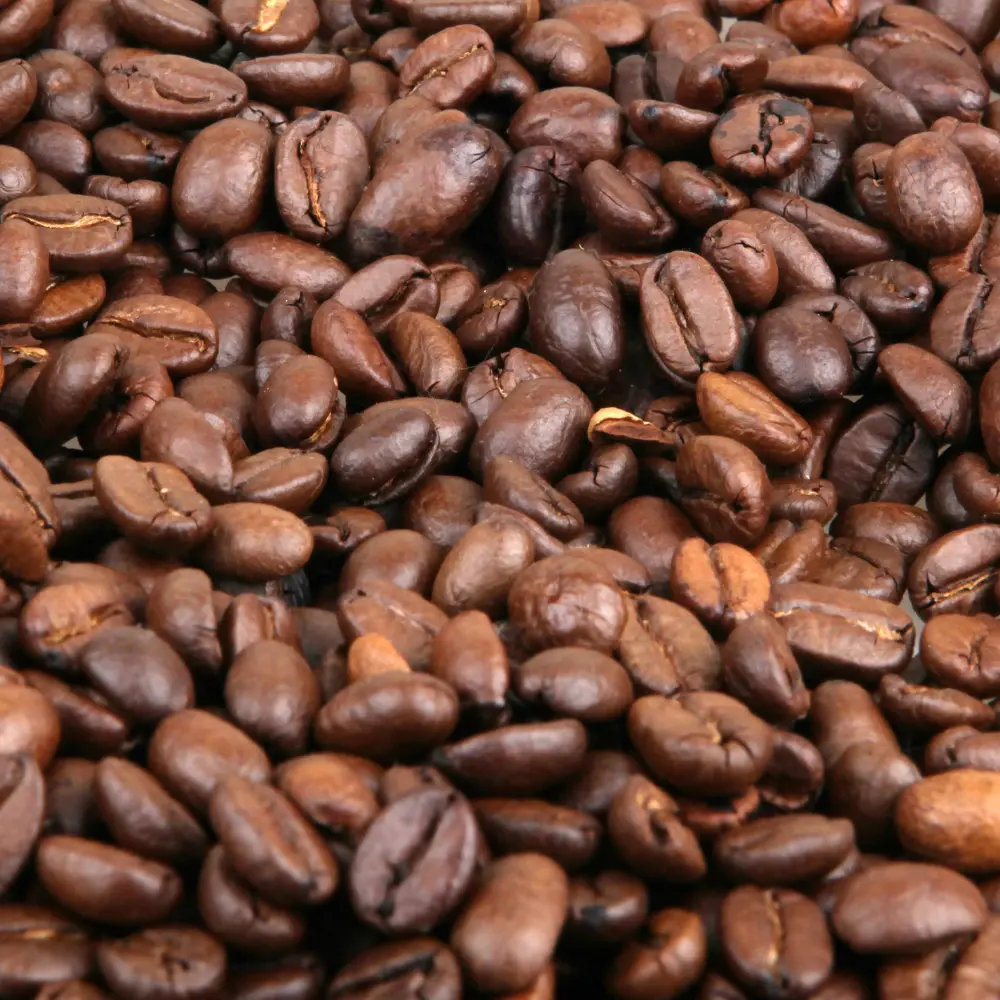
The foundation of a delicious cup of joe lies in the quality of the beans you choose. When selecting coffee beans for pour over brewing, consider the following factors:
- Freshness: Freshly roasted coffee beans are essential for a vibrant and flavorful brew. Look for beans that have been roasted within the past two weeks and store them in an airtight container away from heat, light, and moisture.
- Origin: The origin of your coffee beans can greatly impact the flavor profile of your brew. Different regions produce distinct flavors and characteristics, so experiment with beans from various countries to discover your preferred taste.
- Roast level: Light to medium roast beans are often recommended for pour over brewing, as they showcase the bean’s natural flavors and acidity. However, don’t be afraid to try darker roasts if that’s what you enjoy. The key is to find beans that align with your taste preferences.
Experimenting with Grind Size and Brew Time
Tweaking your grind size and brew time can help you find the ideal coffee ratio and unlock the full potential of your chosen beans. The recommended grind size for pour over brewing is medium-fine, but you may need to make slight adjustments depending on your coffee maker and personal taste.
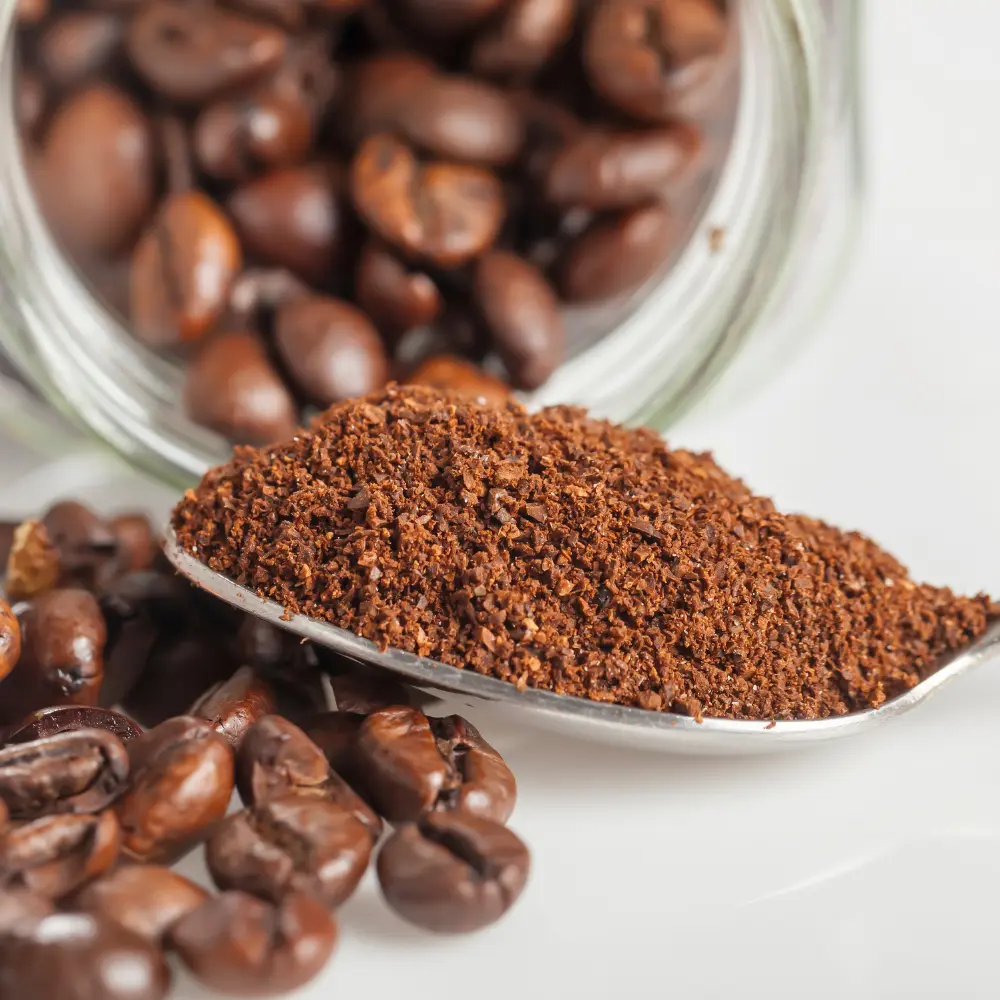
A finer grind can result in a stronger, more full-bodied brew, while a coarser grind may yield a lighter, more delicate cup. However, be cautious not to go too fine or too coarse, as it can lead to over-extraction or under-extraction, respectively.
Brew time is another variable you can experiment with. A general guideline is to aim for a total brew time of 3 to 4 minutes. If your coffee tastes too weak or watery, try extending the brew time slightly. Conversely, if it tastes bitter or over-extracted, reduce the brew time.
Adding a Personal Touch: Flavored Syrups and Other Enhancements
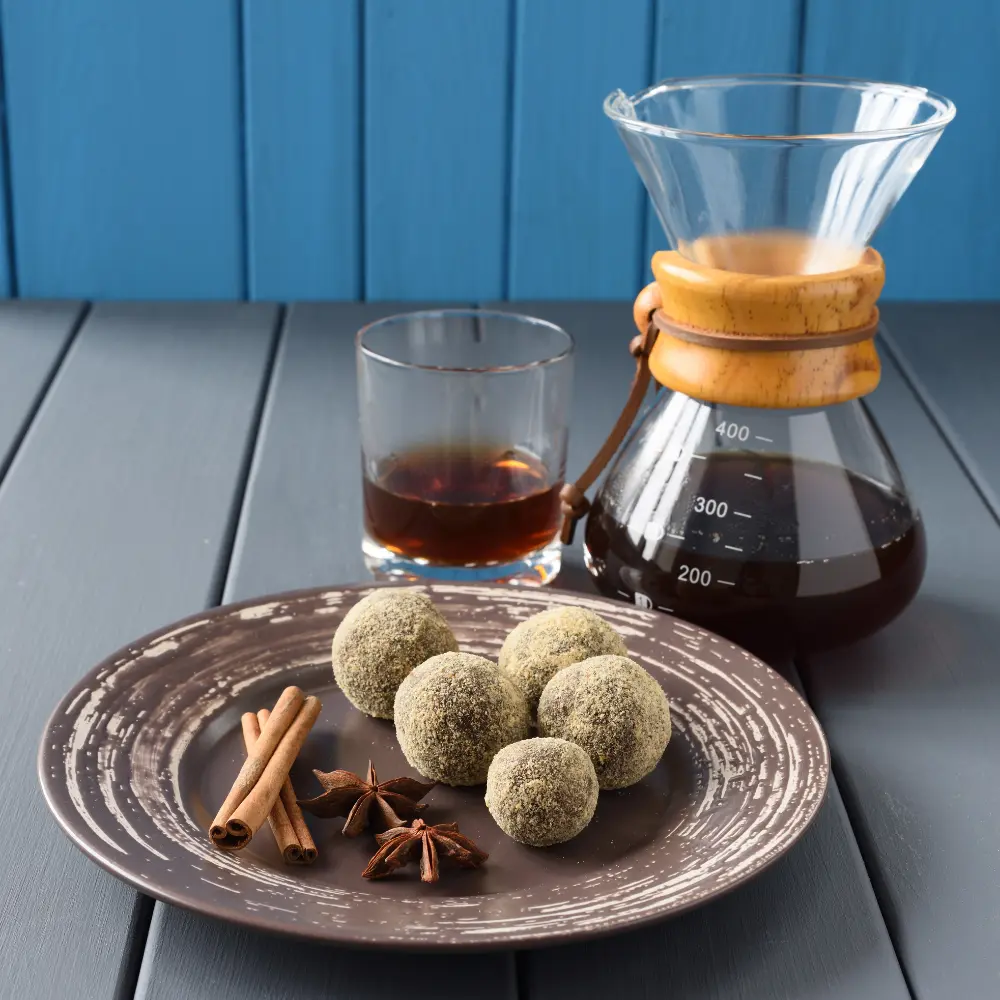
Once you have achieved a level of mastery in the fundamentals of pour over brewing and found your ideal coffee-to-water ratio, you can begin to personalize your coffee experience with various enhancements. The following are some suggestions to contemplate:
- Flavored syrups: Infuse your coffee with a touch of flavored syrup, such as vanilla, caramel, or hazelnut, to create a unique and opulent taste sensation that tantalizes your taste buds.
- Spices: Elevate the inherent flavors of your coffee by adding a sprinkle of cinnamon, cardamom, or nutmeg to your coffee grounds before brewing.
- Dairy and dairy alternatives: Experiment with diverse varieties of milk or dairy alternatives, such as almond, soy, or oat milk, to add a creamy texture and nuanced flavor to your coffee.
By tailoring your pour-over coffee experience, you can produce a cup that truly reflects your distinctive tastes and preferences, enabling you to relish the art of pour over brewing on an entirely new level.
Delicious Pour Over Coffee Recipes
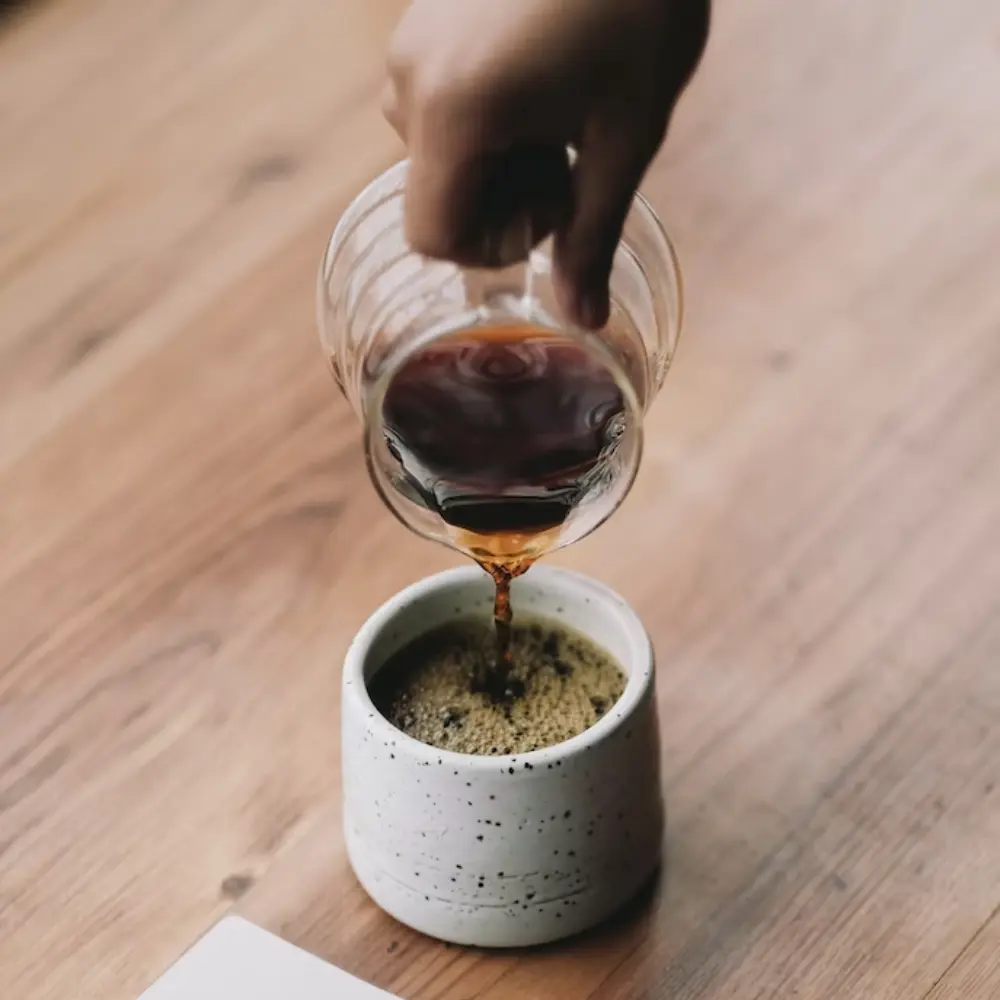
Pour over brewing is not only a fantastic way to enjoy a classic cup of coffee, but it can also serve as the foundation for a variety of delicious coffee recipes. In this section, we’ll introduce you to the classic pour over brew, a refreshing iced pour over coffee, and some creative specialty pour over drinks that you can easily make at home.
The Classic Pour Over: A Simple and Flavorful Brew
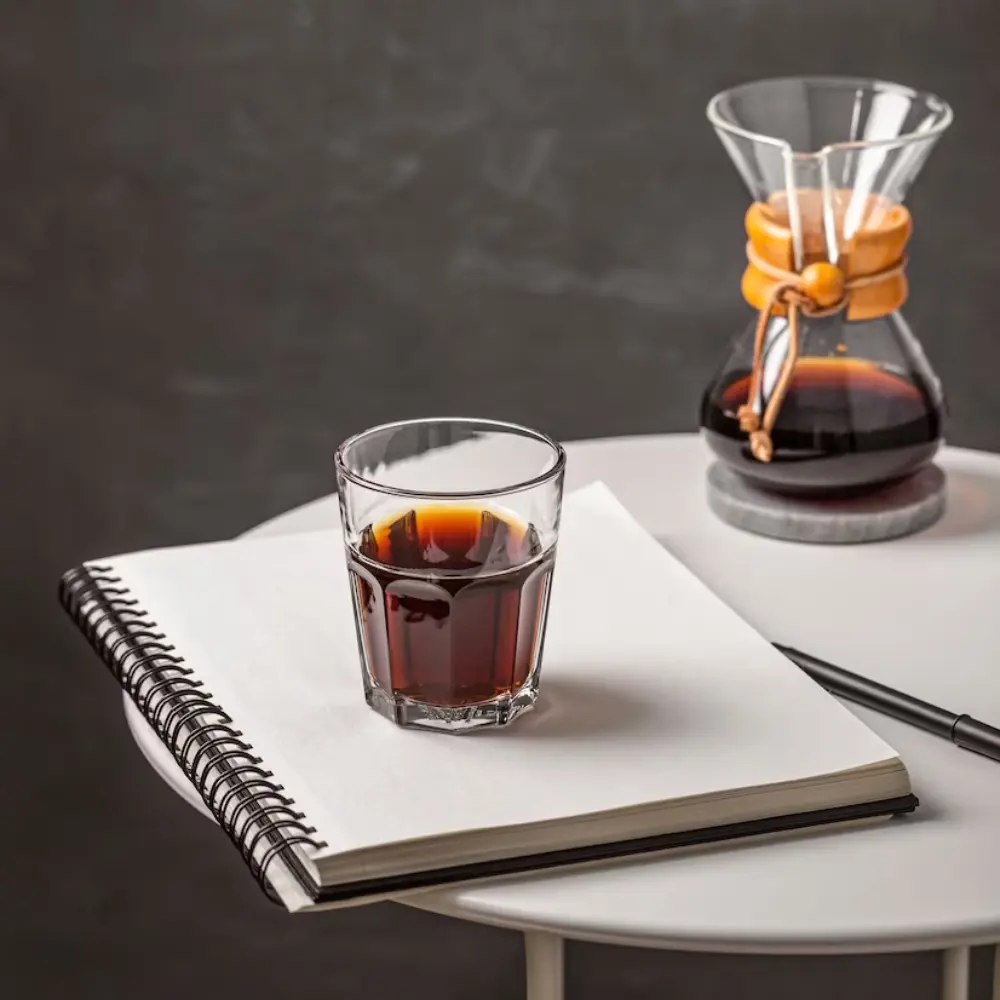
The classic pour over is a straightforward and elegant method of brewing coffee that highlights the unique flavors and aromatics of your chosen beans. To make the classic pour over, follow these simple steps:
- Start by measuring out your coffee beans and grinding them to a medium-fine consistency.
- Wet your paper filter with hot water to remove any paper taste and warm up your coffee maker.
- Add the coffee grounds to the filter and gently shake to level the bed of grounds.
- Heat your water to approximately 200°F (93°C).
- Begin by pouring a small amount of water over the grounds to wet them evenly, allowing them to “bloom” for about 30 seconds.
- Slowly pour the remaining water in a circular motion, ensuring all the grounds are evenly saturated.
- Once you’ve reached your desired coffee-to-water ratio, allow the coffee to finish dripping and then enjoy your classic pour over brew.
Iced Pour Over Coffee: A Refreshing Summer Treat
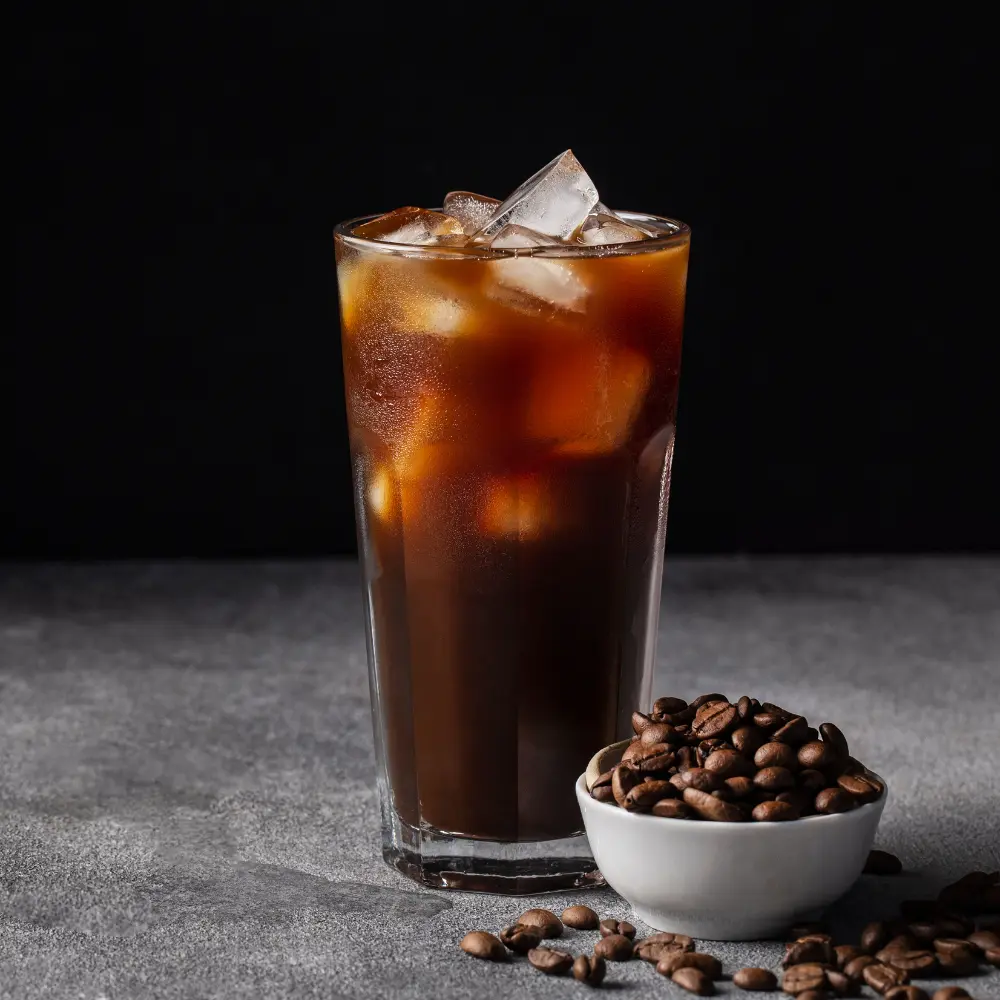
Iced pour over coffee is a delightful and refreshing alternative to hot coffee, perfect for warm summer days. To make this delectable coffee drink, follow these steps:
- Measure and grind your coffee beans as you would for a classic pour over.
- Fill your carafe or glass with ice, aiming for about half the volume of your finished coffee.
- Set up your coffee maker with a wetted filter and add the coffee grounds.
- Heat your water to approximately 200°F (93°C).
- Pour the hot water over the coffee grounds, using a slightly faster pour rate than you would for a hot pour over to account for the reduced brewing time.
- Allow the coffee to drip directly onto the ice, melting it and cooling the coffee instantly.
- Give the coffee a quick stir to ensure the ice has fully melted, then pour your iced pour over coffee over fresh ice and enjoy.
Specialty Pour Over Drinks: From Espresso Martinis to Coffee Tonics
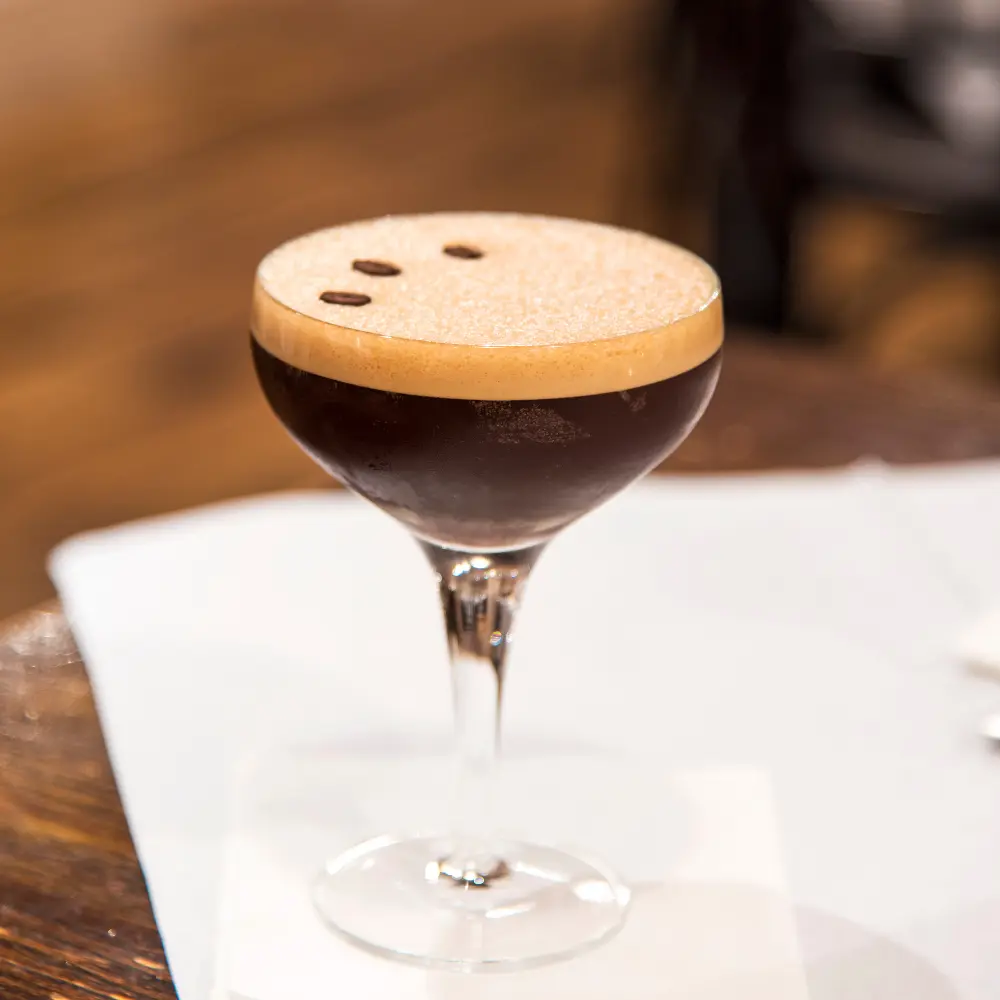
This brewing technique can also be used as the base for a variety of creative and delicious specialty drinks. Here are a couple of ideas to get you started:
- Espresso Martini: Combine 2 oz of strong pour over coffee, 1.5 oz of vodka, and 0.5 oz of coffee liqueur in a shaker filled with ice. Shake vigorously and strain into a chilled martini glass. Garnish with coffee beans and enjoy this sophisticated cocktail.
- Coffee Tonic: Fill a tall glass with ice and add 1-2 oz of strong pour over coffee. Top with tonic water, gently stir to combine and garnish with a lemon or orange twist for a refreshing and effervescent coffee drink.
Experimenting with different recipes can be a fun and rewarding way to explore new flavors and enjoy your favorite brewing method in a whole new light.
How Pour Over Coffee Maker Compares to Other Brewers
There are several popular brewing methods, each with its own unique set of characteristics and benefits. Understanding the differences between pour-over coffee makers and other brewers can help you choose the method that best suits your preferences and lifestyle. In this section, we’ll compare pour-over coffee makers to the French press, drip coffee makers, Moka pots, and espresso machines.
Pour Over vs French Press
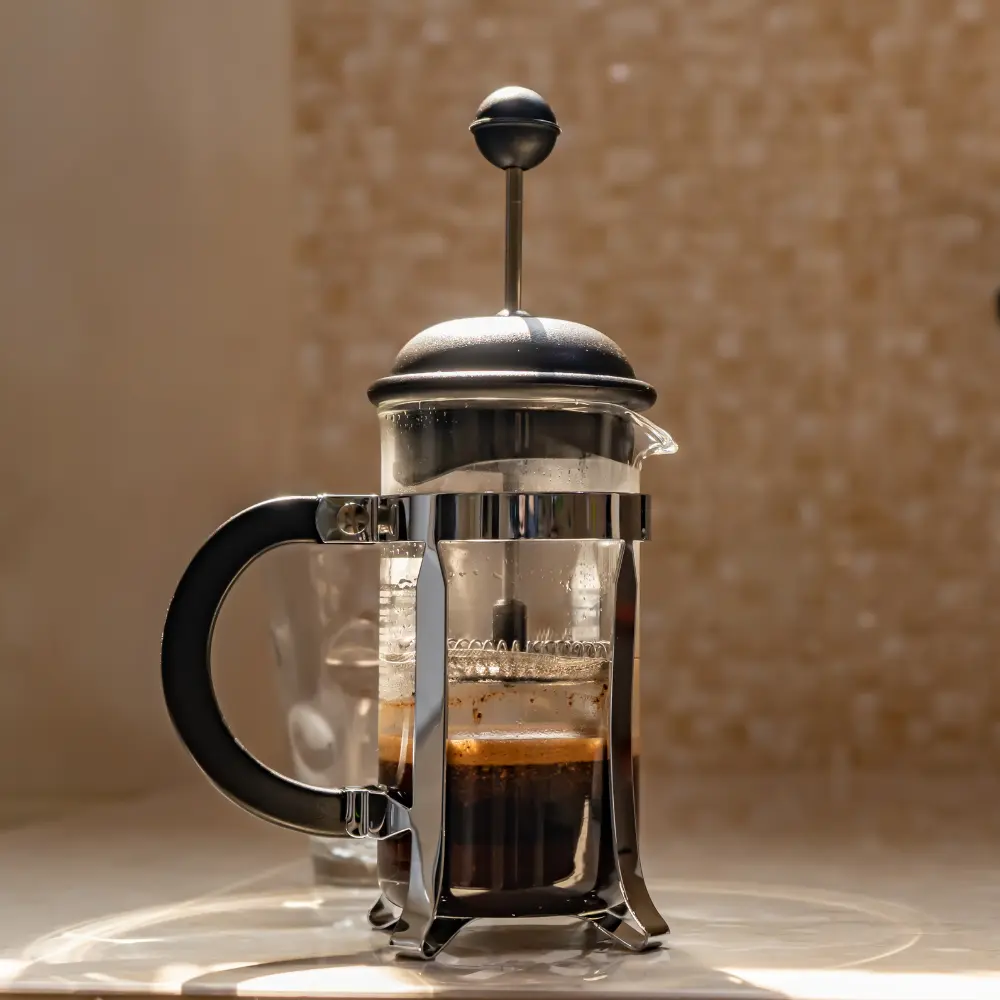
Pour over and French press are both manual brewing methods that offer a high level of control over the brewing process. Here are some key differences between the two:
- Brewing technique: Pour over brewing involves pouring hot water over coffee grounds in a slow, controlled manner, whereas French press brewing requires steeping coffee grounds in hot water for several minutes before pressing the plunger to separate the grounds from the liquid.
- Filtration: Pour over brewers use paper or metal filters that remove most coffee oils and fine particles, resulting in a cleaner, brighter cup. A French press uses a metal mesh filter that allows more oils and sediment to pass through, producing a heavier, fuller-bodied brew.
- Flavor profile: Pour over coffee typically highlights the delicate flavors, acidity, and aromatics of the coffee beans, while French press coffee tends to emphasize the bold, rich flavors and mouthfeel.
Pour Over vs Drip Coffee Makers
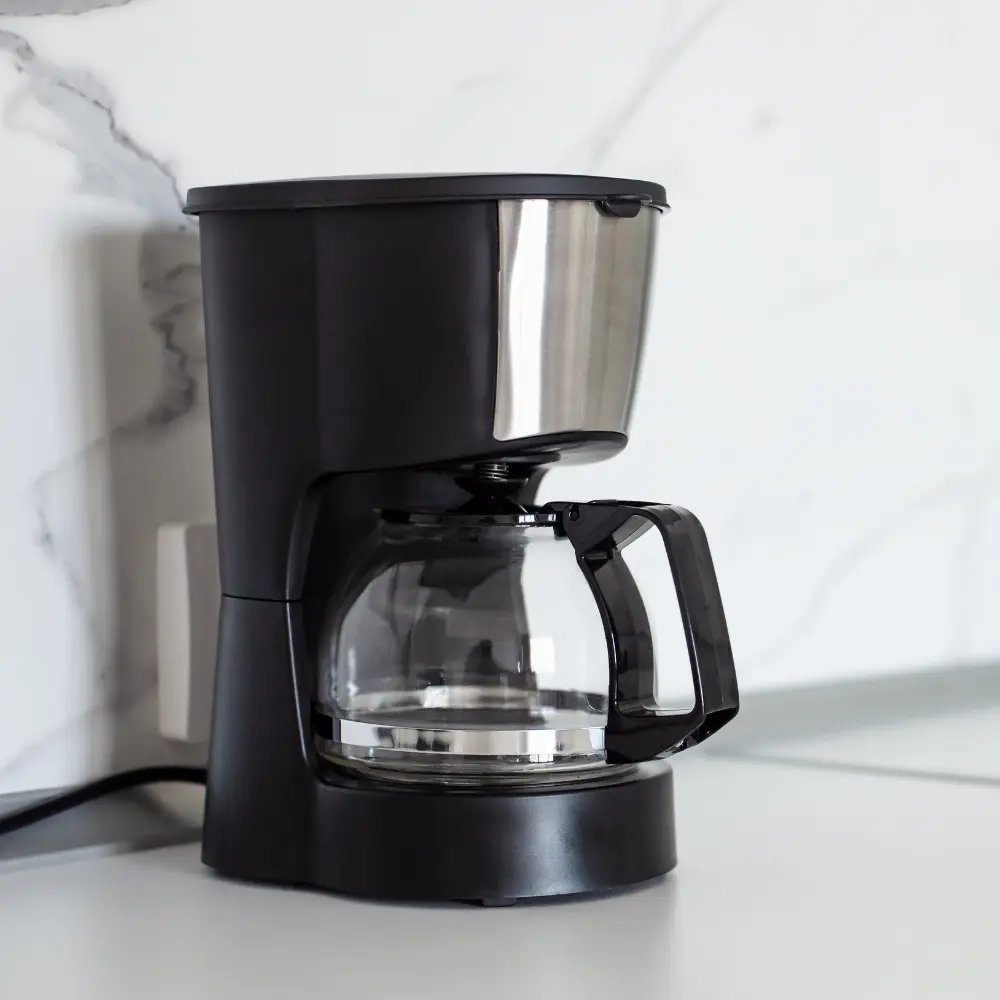
Drip coffee makers are electric appliances that automate the brewing process, making them a convenient option for busy coffee drinkers. Here’s a comparison between the two coffee brewers:
- Brewing Control: Pour over brewing offers more control over variables like water temperature, pour rate, and extraction time, which can lead to a more nuanced and customized cup of coffee. Drip coffee makers have limited control options, often resulting in a more consistent but less personalized brew.
- Flavor profile: Pour-over coffee tends to have a more distinct and vibrant flavor profile, while drip coffee is typically smoother and more balanced, but with less pronounced flavors.
- Convenience: Drip coffee makers are a more practical choice for those who prefer a hands-off approach or need to brew large volumes of coffee, while pour over brewing requires more time, attention, and skill.
Moka Pot vs Pour Over
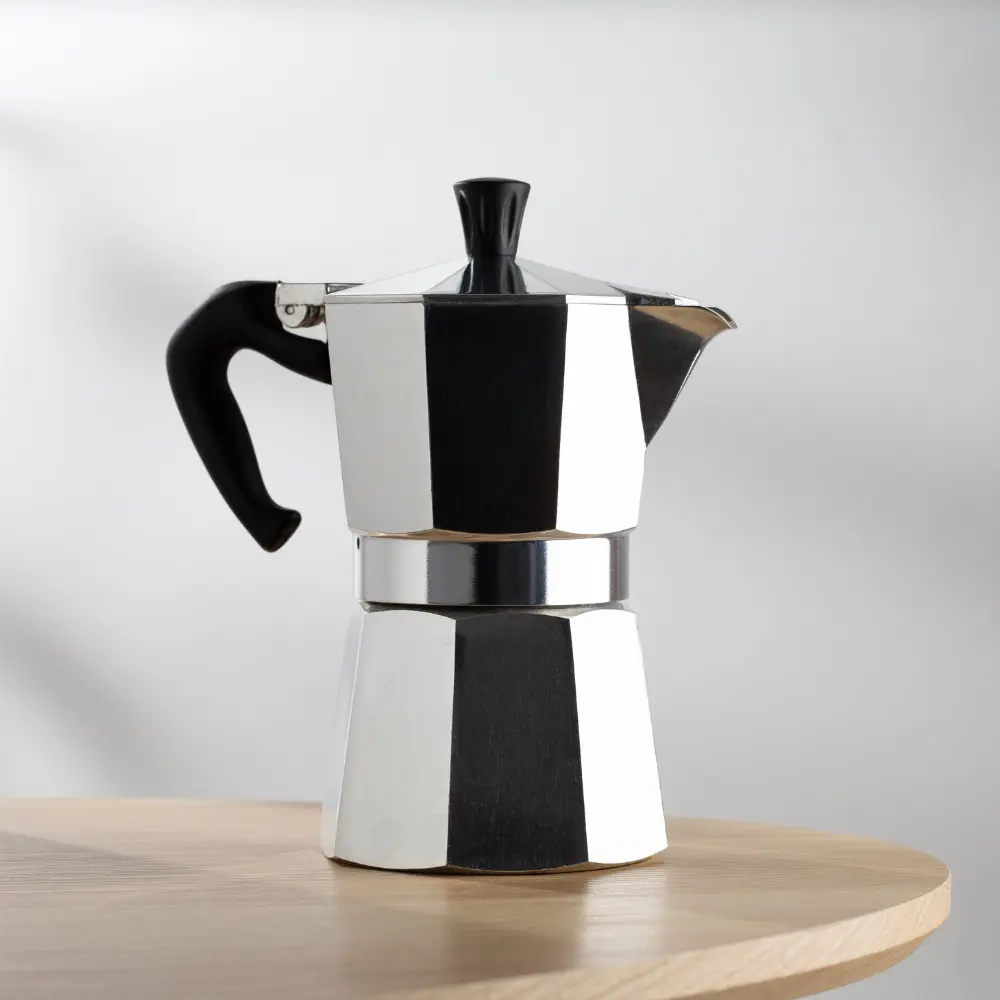
Moka pots are stovetop coffee makers that use steam pressure to force water through coffee grounds, creating a strong and concentrated brew. Here’s a comparison between the two coffee makers:
- Brewing technique: Moka pots use pressure-based brewing, while pour over relies on gravity and a slow, controlled pour of water over coffee grounds.
- Coffee strength: Moka pots produce a concentrated, intense coffee that is often compared to espresso in terms of strength and body. Pour-over coffee is typically lighter and more delicate in flavor.
- Brewing Control: Pour over brewing allows for greater control over variables like water temperature and extraction time, whereas Moka pots offer limited control over these factors.
Pour Over vs Espresso
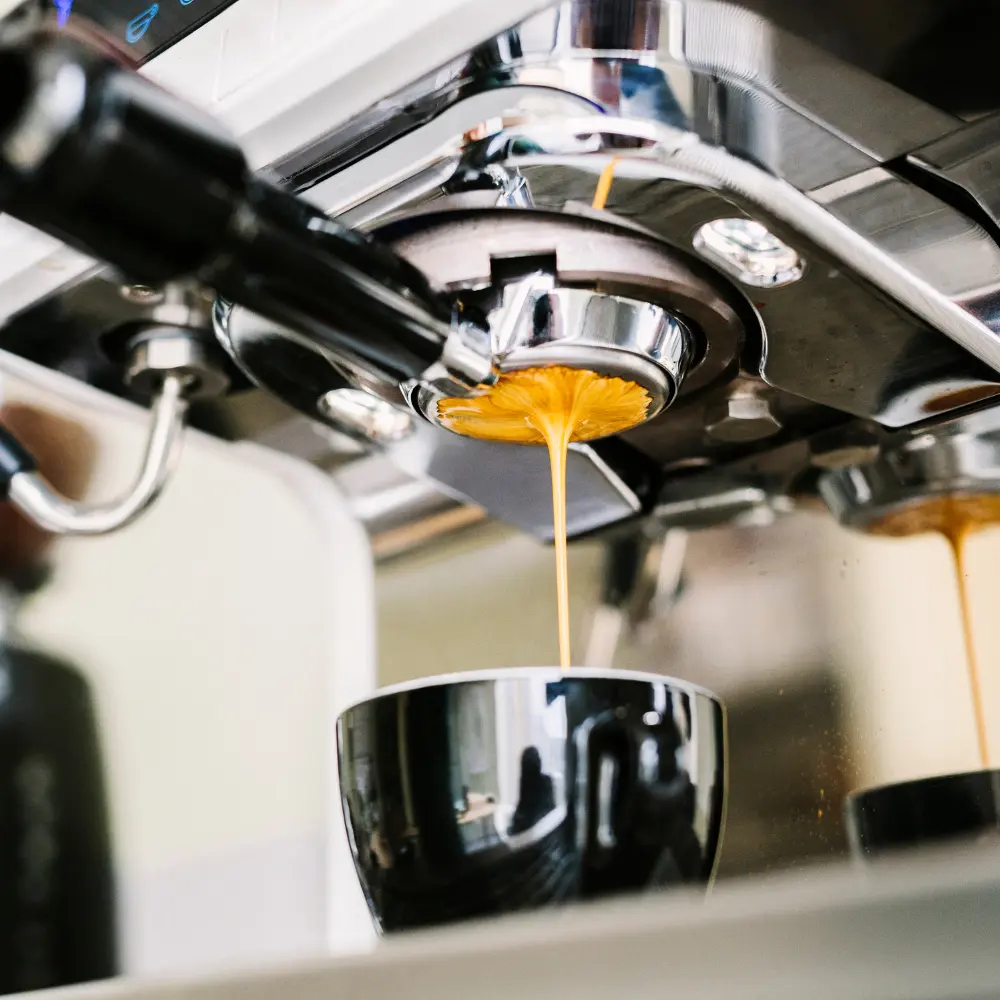
Espresso is a pressure-based brewing method that uses an espresso machine to force hot water through finely-ground coffee, resulting in a concentrated and richly flavored shot of coffee. Here’s how pour over and espresso brewing methods compare:
- Equipment: Pour-over coffee makers are generally simpler and more affordable than espresso machines, which can be complex and expensive.
- Brewing technique: Espresso brewing relies on high pressure to extract coffee, while pour over brewing uses gravity and a controlled pour of hot water over coffee grounds.
- Flavor profile: Espresso produces a bold, intense flavor with a thick, velvety crema, while pour-over coffee highlights the delicate flavors, acidity, and aromatics of the beans.
- Skill level: Both pour over and espresso brewing methods require practice and skill to master, but espresso machines often have a steeper learning curve due to their complexity and the precision needed to achieve the perfect shot.
- Drink variety: Espresso serves as the base for a wide range of specialty coffee drinks, such as lattes, cappuccinos, and Americanos, while pour-over coffee is typically enjoyed as a standalone beverage. However, it offers more flexibility in terms of experimenting with different beans, grind sizes, and brewing variables to customize your brew.
Each brewing method has its unique characteristics, benefits, and drawbacks. Pour-over coffee makers allow for a high level of control and customization, resulting in a clean, bright, and nuanced cup of coffee. In contrast, other brewers, such as French press, drip coffee makers, Moka pots, and espresso machines, may prioritize convenience, strength, or drink variety. Your choice of brewing method will ultimately depend on your personal taste preferences, budget, and the level of control you desire in your coffee-making process.
Conclusion
In conclusion, The Ultimate Guide to Pour Over Coffee: Brewing Perfection in Your Own Home has imparted a comprehensive understanding of what pour over coffee is and how to make a coffee drink that aligns with your taste preferences. We have explored the history, science, and art behind this favored brewing method, as well as the vital equipment and techniques required to master the craft.
Throughout this guide, we have stressed the importance of experimentation and customization to attain the perfect coffee experience. From selecting the optimal beans and grind size to refining your pouring technique and coffee-to-water ratio, each step in the process enables you to fine-tune your brew and generate a cup of coffee that genuinely reflects your unique preferences.
Furthermore, we have compared pour over brewing to other popular methods, highlighting its unparalleled ability to accentuate the delicate flavors and aromas of your selected beans. We have also shared some mouth-watering pour-over coffee recipes to inspire you to expand your coffee horizons and explore new ways to relish this versatile brewing method.
Now that you have a comprehensive understanding of what pour over coffee is and how to make it, you are well-prepared to embark on your coffee journey. With persistence, practice, and a little ingenuity, you can savor brewing perfection in your own home and share a gratifying experience with your loved ones. Happy brewing!
FAQ
How long should a pour over coffee take to brew?
This coffee should generally take between 3 to 5 minutes to brew, including the bloom phase. The specific brewing time may vary depending on the coffee-to-water ratio, grind size, and pouring technique.
Can I use regular tap water for my pour-over coffee?
While you can use tap water for pour-over coffee, using filtered or bottled water is recommended to ensure optimal flavor and prevent potential off-tastes from impurities or minerals present in tap water.
What is the ideal water temperature for pour over brewing?
The ideal water temperature for pour over brewing is between 195°F to 205°F (90°C to 96°C). Using water within this temperature range helps to achieve proper extraction without scalding the coffee grounds.
How do I clean and maintain my pour-over coffee maker?
To clean and maintain your coffee maker, rinse the brewing device and filter after each use, and occasionally clean it with mild dish soap and warm water. For glass or ceramic coffee makers, avoid using abrasive cleaners or scrubbers that may cause scratches. Always follow the manufacturer's cleaning instructions.











![Kalita Wave Dripper 155 series glass [1-2 person] # 05045 (japan import) by Kalita (Carita)](https://m.media-amazon.com/images/I/41-OEK88lxL._SL160_.jpg)

![Kalita Wave Series Wave Dripper 155 [For 1 to 2 People] #04151 ,brown (bronze)](https://m.media-amazon.com/images/I/317m-akh7HL._SL160_.jpg)











